Mission Hope For Tomorrow
" Let Children Dream, Not Work "
An Initiative By Aadarsh Yuva Mission Human Welfare, India
![]()
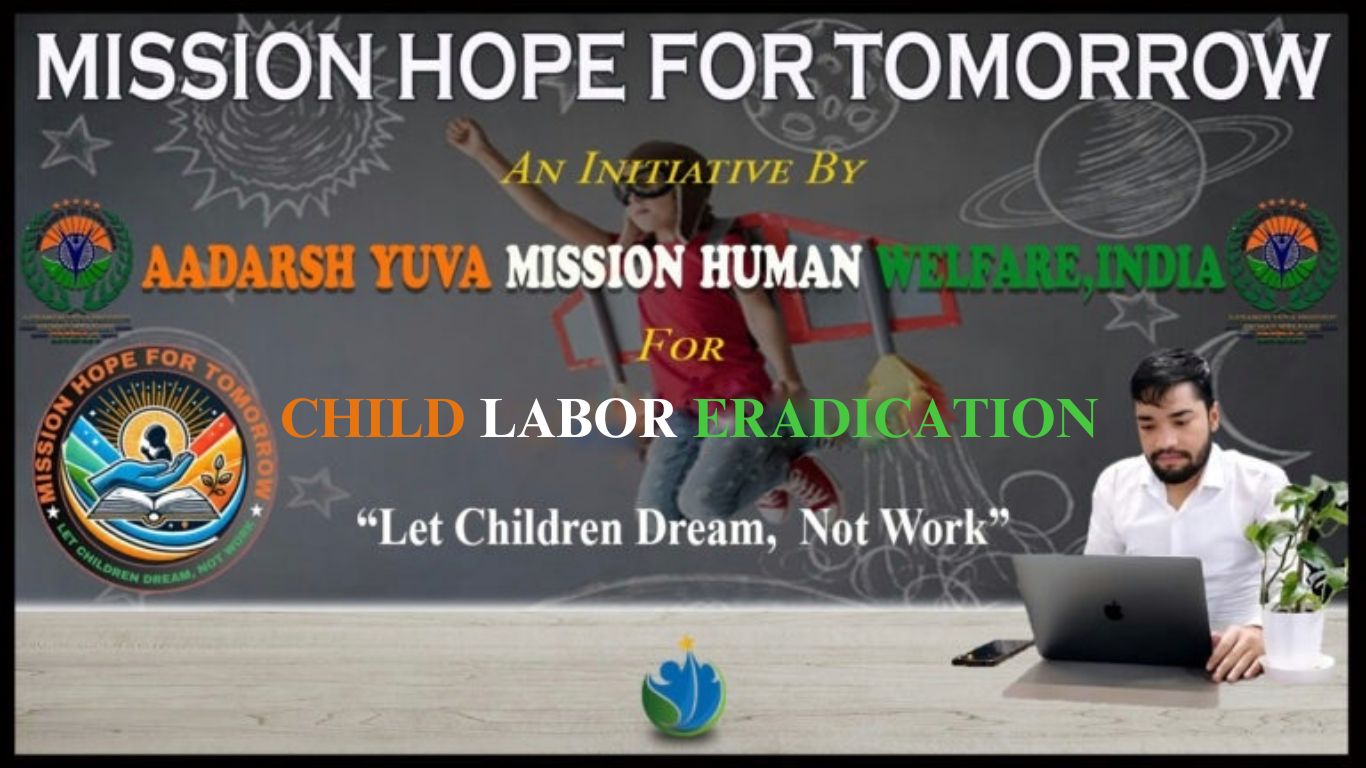 Child Labour Continues To Be A Critical Issue That Undermines The Future Of Millions Of Children Across The World. Recognizing The Urgency Of This Matter, Aadarsh Yuva Mission Human Welfare India Has Launched The Mission Hope For Tomorrow, A Transformative Initiative Aimed At Eradicating Child Labour And Ensuring That Every Child Has The Opportunity To Dream, Learn, And Grow In A Safe And Nurturing Environment.
Child Labour Continues To Be A Critical Issue That Undermines The Future Of Millions Of Children Across The World. Recognizing The Urgency Of This Matter, Aadarsh Yuva Mission Human Welfare India Has Launched The Mission Hope For Tomorrow, A Transformative Initiative Aimed At Eradicating Child Labour And Ensuring That Every Child Has The Opportunity To Dream, Learn, And Grow In A Safe And Nurturing Environment.
The Initiative’s Tagline, "Let Children Dream, Not Work", Encapsulates Its Core Mission Of Providing Children With The Opportunity To Live Out Their Dreams Through Education, Protection, And Empowerment. It Seeks To Address The Root Causes Of Child Labour, Including Poverty, Lack Of Access To Quality Education, And Social Inequalities, While Also Challenging Societal Attitudes That Normalize The Exploitation Of Children.
Mission Hope For Tomorrow Is A Multifaceted Initiative That Works To Raise Awareness About The Harms Of Child Labour And Advocates For Stronger Policies And Legislation. The Project Is Designed To Empower Communities By Providing Access To Education, Vocational Training, Healthcare, And Legal Support For Children And Their Families. Through Partnerships With Schools, Local Governments, And Child Welfare Organizations, This Initiative Aims To Build Sustainable Solutions That Break The Cycle Of Poverty And Child Exploitation.
By Focusing On Education As A Key Pillar, Mission Hope For Tomorrow Ensures That Children Who Are At Risk Of Child Labour Are Provided With The Tools To Change Their Lives. The Initiative Also Advocates For Societal Shifts, Where Children Are Seen As The Leaders Of Tomorrow, Not Workers Of Today. The Ultimate Goal Is To Create A Future Where Every Child Has The Opportunity To Pursue Their Dreams And Contribute To A Brighter, More Equitable World.
Mission Hope For Tomorrow, Closely Aligns With Several Sustainable Development Goals (Sdgs), Particularly Those That Focus On Education, Equality, And Ending Child Exploitation. This Initiative Directly Supports The Realization Of A More Just And Equitable World Where Children Are Seen As The Future Leaders,
1. Sdg 1: No Poverty:The Mission Addresses The Underlying Cause Of Child Labour: Poverty. By Providing Children From Marginalized Communities With Access To Education, Vocational Training, And Essential Services, Mission Hope For Tomorrow Helps Reduce The Cycle Of Poverty. This Ensures That Children Do Not Have To Work To Support Their Families But Can Instead Focus On Their Education And Dreams.
2. Sdg 4: Quality Education:A Core Focus Of Mission Hope For Tomorrow Is Education, Ensuring That Every Child Has Access To Free, Quality Primary And Secondary Education. By Helping Children Escape The Grip Of Child Labour, The Initiative Ensures They Have The Opportunity To Learn, Grow, And Develop The Skills Necessary For A Brighter Future.
3. Sdg 5: Gender Equality:This Initiative Promotes Gender Equality By Addressing The Specific Challenges Faced By Young Girls Who Are Often More Vulnerable To Child Labour And Exploitation. It Advocates For Equal Opportunities For All Children, Regardless Of Gender, By Providing Access To Education And Empowerment Programs.
4. Sdg 8: Decent Work And Economic Growth:By Preventing Child Labour, Mission Hope For Tomorrow Contributes To The Promotion Of Decent Work For Adults. The Initiative Supports Families By Offering Resources That Enable Them To Support Their Children’s Education, Ultimately Ensuring That Parents Can Secure Decent Work Without Relying On Their Children As Income Earners.
5. Sdg 10: Reduced Inequalities:The Mission Focuses On Reducing Inequalities By Working With The Most Vulnerable And Marginalized Communities, Ensuring That Children From These Groups Have Access To Opportunities That Will Help Them Break Free From The Cycle Of Child Labour And Poverty. It Creates Pathways For Equal Opportunities, Regardless Of Background.
6. Sdg 16: Peace, Justice, And Strong Institutions:Advocacy And Legal Aid, Mission Hope For Tomorrow Works To Strengthen Institutions That Protect Children From Exploitation And Violence. It Calls For Policy Reforms And Stronger Child Protection Laws To Ensure That Every Child’s Rights Are Respected And Upheld.
By Working Across These Sdg Goals, Mission Hope For Tomorrow Not Only Focuses On Ending Child Labour But Also Creates A Foundation For Sustainable Growth, Development, And A Better Future For Children. Through Education And Empowerment, This Initiative Helps Ensure That Every Child Has The Right To Dream And Build A Life Free From Exploitation. Tagline
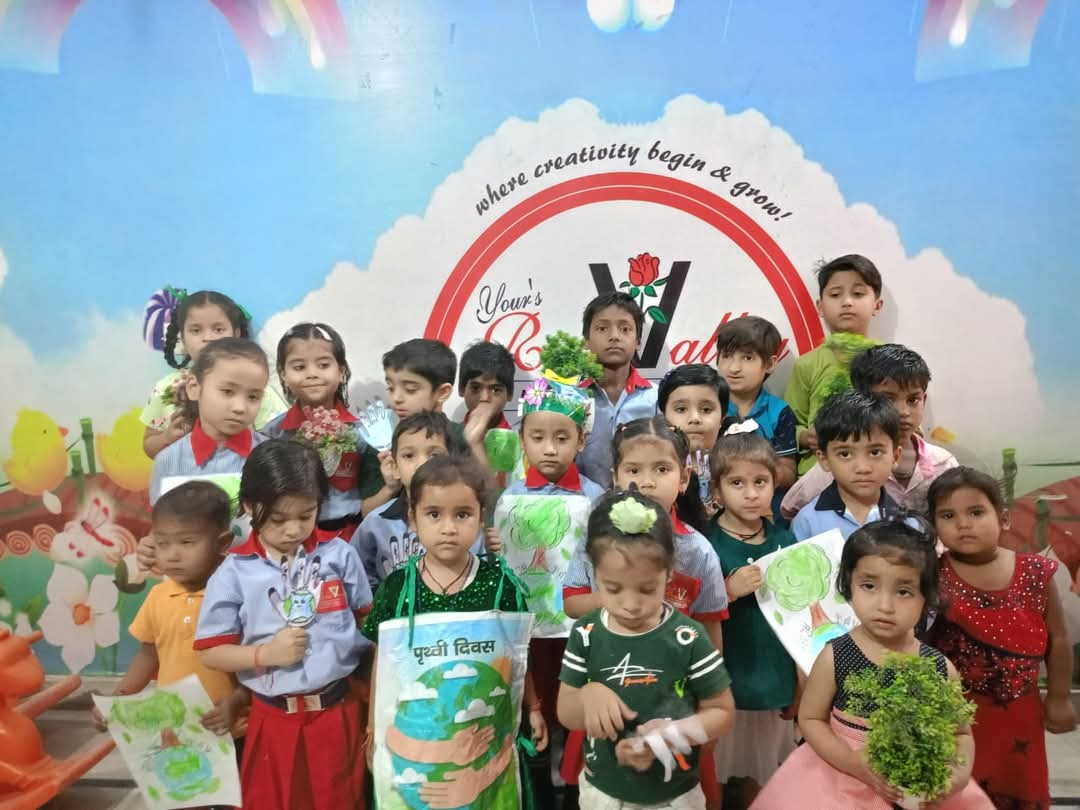 "Let's Children Dream, Not Work"
"Let's Children Dream, Not Work"
Children As Dreamers, Not Workers: The Tagline Emphasizes The Idea That Children Should Be Allowed To Pursue Their Dreams, Explore Their Potential, And Receive Education, Rather Than Being Forced Into Work That Robs Them Of Their Childhood, Health, And Future Opportunities.
- Protection Of Childhood: By Stating "Not Work," The Tagline Calls Attention To The Harmful Impact Of Child Labor, Urging Society To Protect Children's Innocence, Aspirations, And Fundamental Rights. It Conveys A Message Of Compassion, Urging Us To Take Collective Responsibility For Providing A Safe And Nurturing Environment Where Children Can Thrive.
- Hope For A Better Tomorrow: The Phrase "Let's Children Dream" Ties Directly Into The Broader Mission Of The Initiative, Promoting Hope For A Brighter Future Where Every Child Is Given The Chance To Realize Their Potential, Supported By Education, Opportunities, And A Society Free From Exploitation.
In Essence, The Tagline Invites All Stakeholders—Governments, Communities, Organizations, And Individuals—To Come Together And Work Toward Ensuring That Children Have The Freedom To Dream, Not Work, Creating A Future Where Every Child Is Empowered To Reach Their Fullest Potential.
Background And Justification For "Mission Hope For Tomorrow" Initiative
Background: In Many Parts Of The World, Including India, Millions Of Children Are Deprived Of Their Basic Rights To Education, Safety, And A Carefree Childhood Due To The Widespread Issue Of Child Labor. Despite Significant Progress In Child Protection Laws And Policies, Child Labor Continues To Affect Countless Children, Particularly In Rural Areas, Urban Slums, And Marginalized Communities. These Children Are Often Forced Into Hazardous Work Environments, Ranging From Factories And Mines To Domestic Work, Preventing Them From Attending School Or Enjoying The Simple Joys Of Childhood.
The Prevalence Of Child Labor Is Often Tied To Systemic Poverty, Lack Of Awareness, And Social Neglect, Where Families, In A Desperate Bid To Make Ends Meet, May Encourage Or Even Compel Their Children To Work. This Undermines The Potential Of These Children, Denying Them Access To Quality Education, Personal Growth, And A Future Filled With Opportunities.
Justification: "Mission Hope For Tomorrow" Is A Transformative Initiative Launched By Aadarsh Yuva Mission Human Welfare India, With The Vision Of Eradicating Child Labor And Ensuring That Every Child Has The Right To Dream, Learn, And Grow In A Secure Environment. This Initiative Is Grounded In The Belief That A Child's Future Should Not Be Limited By Their Circumstances, And That By Empowering Them With Education, We Can Break The Cycle Of Poverty, Illiteracy, And Exploitation.
The Justification For This Mission Lies In Several Critical Factors:
- Human Rights And Child Welfare: Child Labor Is A Violation Of Children's Fundamental Human Rights. Every Child Has The Right To Education, Safety, And Development. By Addressing Child Labor, This Initiative Aims To Uphold These Rights, Ensuring That No Child Is Forced Into Labor, But Instead Is Given The Opportunity To Thrive Through Education.
- Economic And Social Empowerment: Children Who Are Liberated From The Cycle Of Labor Can Benefit From Education, Which Is The Key To Long-Term Economic And Social Empowerment. Education Allows Children To Escape Poverty, Find Gainful Employment As Adults, And Contribute To Their Communities In Meaningful Ways. By Providing Children With The Tools To Succeed, We Ensure A Brighter And More Sustainable Future For Them And Society.
- Alignment With Global Goals: "Mission Hope For Tomorrow" Aligns With Several Sustainable Development Goals (Sdgs), Particularly Sdg 4 (Quality Education), Sdg 8 (Decent Work And Economic Growth), And Sdg 10 (Reduced Inequality). This Initiative Directly Contributes To Creating An Inclusive Society Where No Child Is Left Behind.
- Community And Societal Responsibility: The Initiative Highlights The Role Of Communities, Governments, And Civil Society In Addressing Child Labor. It Calls For Collective Action To Eliminate Practices That Deprive Children Of Their Potential And Focuses On Educating Families, Raising Awareness, And Providing Alternative Income Opportunities To Parents To Reduce The Need For Children To Work.
- Empowerment Through Education: Education Is A Proven Path To Breaking The Cycle Of Poverty. The Mission’s Primary Goal Is To Ensure Every Child Is Enrolled In School And Provided With Access To Quality Education. This Not Only Ensures That Children Can Follow Their Dreams But Also Creates A Ripple Effect That Positively Impacts Families And Communities.
"Mission Hope For Tomorrow" Is A Critical Initiative That Seeks To Protect Children’s Rights, Eliminate Child Labor, And Provide Them With The Opportunity To Live A Life Of Dignity, Freedom, And Opportunity. By Addressing The Root Causes Of Child Labor, Such As Poverty And Lack Of Access To Education, The Initiative Aims To Create A Future Where Every Child Can Dream, Grow, And Succeed, Paving The Way For A Brighter Tomorrow For India.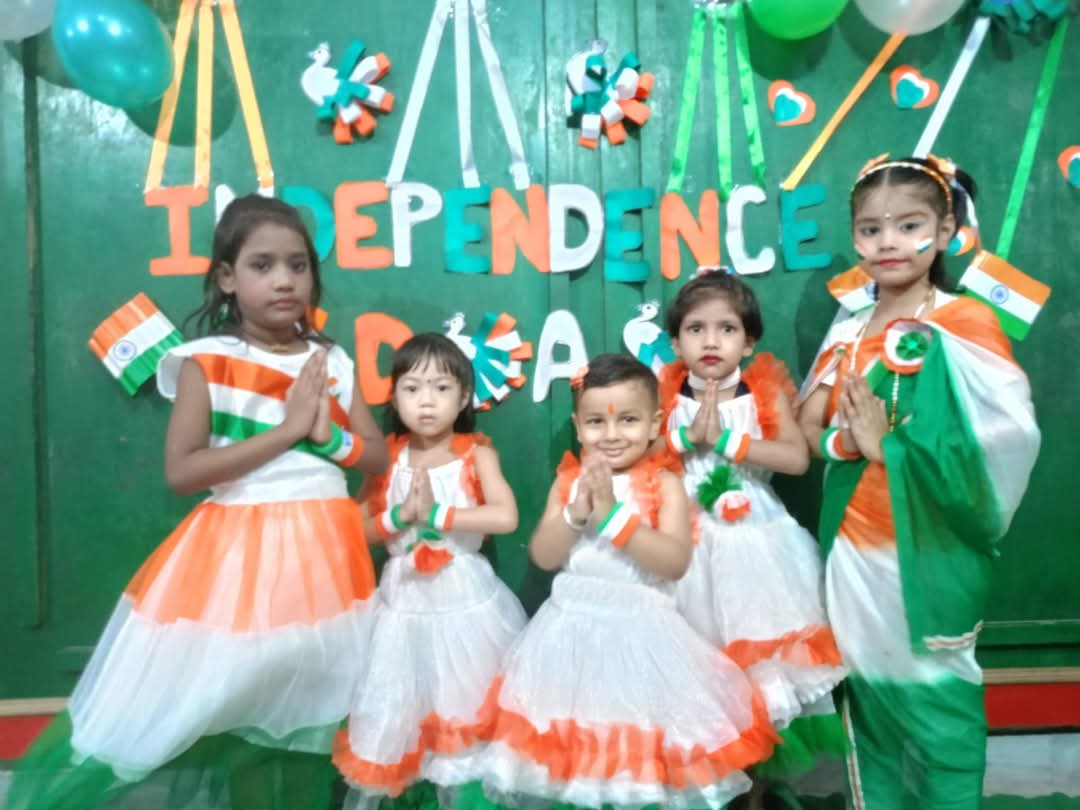
Why "Mission Hope For Tomorrow" Initiative
- Eradicate Child Labor: The Primary Goal Of The Initiative Is To Eliminate Child Labor, Providing Children With The Opportunity To Live Their Childhood Free From Exploitation And Hardship.
- Promote Education: The Initiative Focuses On Ensuring Every Child Has Access To Education, Empowering Them To Build A Better Future Through Learning And Development.
- Uphold Human Rights: It Seeks To Protect The Fundamental Rights Of Children, Including Their Right To Education, Safety, And A Bright Future, Aligning With International Child Protection Laws.
- Break The Poverty Cycle: By Providing Education And Alternative Income Sources To Families, The Initiative Aims To Break The Cycle Of Poverty And Child Labor, Offering Long-Term Economic Benefits.
- Raise Awareness: It Aims To Raise Awareness About The Harmful Effects Of Child Labor, Encouraging Communities, Families, And Policymakers To Take Collective Action.
- Align With Sdgs: The Initiative Aligns With Sustainable Development Goals (Sdgs), Particularly Sdg 4 (Quality Education), Sdg 8 (Decent Work And Economic Growth), And Sdg 10 (Reduced Inequality), Contributing To Global Efforts For A Better Future.
- Empower Families And Communities: By Reducing Reliance On Child Labor, The Initiative Strengthens Families And Communities, Fostering A More Sustainable And Equitable Society.
- Foster Future Leaders: The Mission Seeks To Nurture The Potential Of Children, Allowing Them To Grow Into Educated, Empowered, And Responsible Leaders Who Can Contribute Positively To Society.
- Long-Term Societal Impact: The Initiative Focuses On Long-Term Solutions That Not Only Improve Individual Lives But Also Contribute To The Overall Development And Progress Of Society.
- Moral And Ethical Responsibility: It Is A Call To Action For Society To Step Up And Take Responsibility For The Well-Being Of Children, Ensuring That Every Child Has The Chance To Dream And Succeed.
The Need For "Mission Hope For Tomorrow" Initiative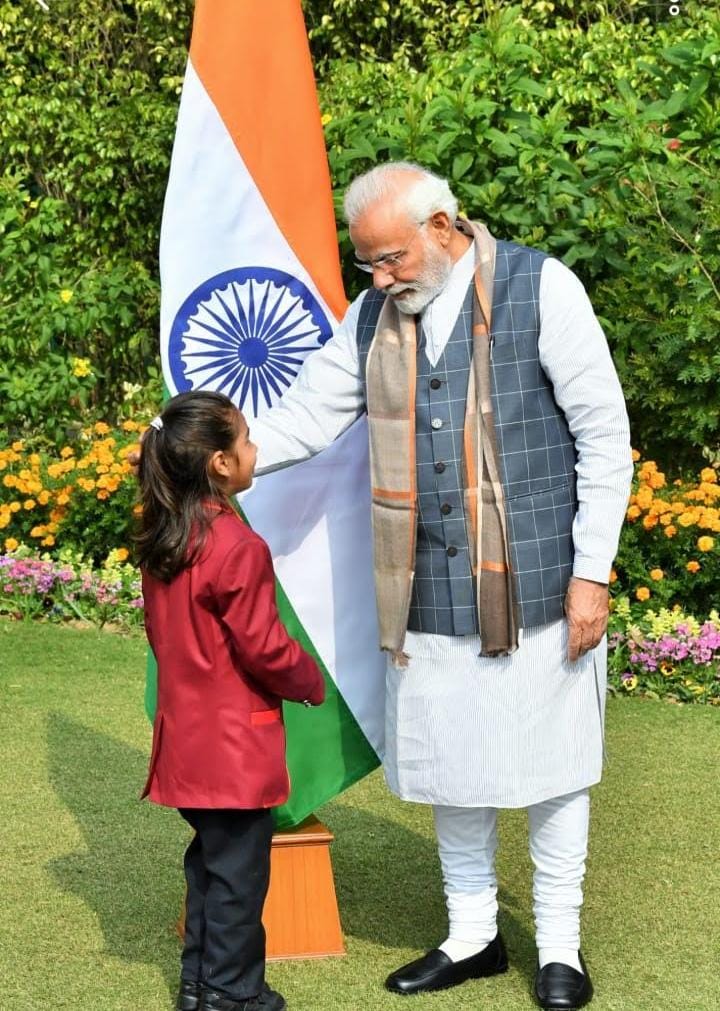
- Prevalence Of Child Labor: Despite Laws And Policies, Millions Of Children In India Are Still Engaged In Labor, Often Under Hazardous Conditions. The Need For This Initiative Arises From The Urgent Requirement To Eliminate Child Labor And Protect Children’s Basic Rights To Education And Childhood.
- Impact Of Poverty On Children: Many Children Are Forced Into Labor Due To Their Families' Economic Hardships. This Initiative Addresses The Root Cause Of Child Labor By Working With Communities To Reduce Poverty And Provide Sustainable Income Sources To Families, So Children Don’t Have To Work For Survival.
- Lack Of Access To Quality Education: A Significant Number Of Children, Particularly In Marginalized And Rural Areas, Lack Access To Quality Education. The Initiative Aims To Bridge This Gap, Ensuring That Every Child Can Attend School And Receive The Necessary Resources To Succeed Academically And Personally.
- Violation Of Children's Rights: Child Labor Is A Severe Violation Of Children's Rights, Depriving Them Of Their Right To Safety, Education, And A Dignified Life. "Mission Hope For Tomorrow" Is Essential To Ensure The Protection Of These Rights And Advocate For A Society Where Every Child Is Treated With Dignity And Respect.
- Long-Term Socio-Economic Benefits: By Empowering Children With Education And Ensuring They Stay Out Of The Workforce, The Initiative Helps Build A Brighter Future For Them, Their Families, And Society As A Whole. Educated Children Can Break The Cycle Of Poverty, Contribute To Economic Development, And Improve Their Communities’ Overall Well-Being.
- Global Commitment To Ending Child Labor: India Is A Signatory To International Conventions, Including Those Of The United Nations And Ilo, Which Call For The Elimination Of Child Labor. This Initiative Helps India Fulfill Its Global Commitments And Align With Sustainable Development Goals (Sdgs), Particularly Sdg 4 (Quality Education) And Sdg 8 (Decent Work And Economic Growth).
- Community And Social Responsibility: The Initiative Highlights The Importance Of Collective Responsibility—Governments, Ngos, Communities, And Individuals Must Come Together To Combat Child Labor And Ensure That Every Child Has A Future Full Of Hope And Opportunity.
- Breaking The Cycle Of Exploitation: Without Intervention, Many Children Will Continue To Live A Life Of Exploitation And Limited Opportunity. By Providing Education And Awareness, The Initiative Works To Break This Cycle And Empower Future Generations To Live Fulfilled Lives.
- National Development: The Future Of India Lies In The Empowerment Of Its Youth. "Mission Hope For Tomorrow" Contributes To National Development By Ensuring Children Are Given The Chance To Grow Into Skilled, Educated, And Responsible Citizens Who Will Drive The Country Forward.
- Moral Imperative: There Is A Moral Imperative To Protect Vulnerable Children From Exploitation. The Initiative Responds To The Ethical Responsibility Of Creating A Society Where Children Can Dream And Achieve Their Full Potential Without Being Forced Into Labor Or Deprived Of Their Childhood.
The Need For "Mission Hope For Tomorrow" Is Driven By The Widespread Challenges Posed By Child Labor, Poverty, And Lack Of Educational Access. This Initiative Is Crucial To Ensuring That Every Child Has The Right To A Safe, Joyful Childhood And The Opportunity To Build A Brighter Future For Themselves And Their Communities.
Why"Mission Hope For Tomorrow"Initiative Matters
- Protecting Children’s Rights: The Initiative Matters Because It Seeks To Uphold The Fundamental Rights Of Children, Especially Their Right To A Safe Childhood, Education, And The Freedom To Dream. It Addresses The Harsh Reality Of Child Labor, Where Children Are Deprived Of Their Rights And Forced Into Work Instead Of Attending School And Enjoying Their Youth.
- Empowering The Next Generation: By Providing Children With Education And Opportunities, "Mission Hope For Tomorrow" Empowers Them To Become Future Leaders, Skilled Professionals, And Contributors To Society. Education Serves As The Foundation For Personal Growth And A Better Quality Of Life, Which Is Crucial For Creating A Brighter Tomorrow.
- Breaking The Cycle Of Poverty: The Initiative Plays A Critical Role In Breaking The Intergenerational Cycle Of Poverty. Children Who Are Freed From Labor And Given Access To Education Can Build Better Futures For Themselves And Their Families, Thus Contributing To Long-Term Economic Growth And Stability.
- Fostering National Development: India's Future Depends On The Potential Of Its Youth. By Focusing On Education And The Protection Of Children From Exploitation, "Mission Hope For Tomorrow" Contributes To The Nation’s Development. Educated Children Become Skilled Adults Who Can Drive Innovation, Create Businesses, And Contribute To The Country’s Progress.
- Addressing Systemic Issues: The Initiative Tackles The Root Causes Of Child Labor, Such As Poverty, Lack Of Access To Education, And Social Inequality. It Addresses These Systemic Issues By Offering Sustainable Solutions That Go Beyond Immediate Relief, Aiming For Long-Term Social And Economic Change.
- Supporting Families And Communities: "Mission Hope For Tomorrow" Doesn't Just Help Children; It Supports Entire Families And Communities. By Offering Financial Aid, Vocational Training, And Awareness Programs, It Reduces The Need For Children To Work And Promotes Sustainable Income Sources For Families, Enabling A Healthier, More Stable Community Environment.
- Alignment With Global Goals: The Initiative Aligns With The United Nations’ Sustainable Development Goals (Sdgs), Particularly Sdg 4 (Quality Education), Sdg 8 (Decent Work And Economic Growth), And Sdg 10 (Reduced Inequalities). By Focusing On Education And Eradicating Child Labor, It Contributes To Global Efforts To Create A More Just And Equitable World.
- Social Responsibility And Ethical Duty: The Initiative Matters Because It Answers A Moral And Ethical Call To Action. As A Society, We Have A Responsibility To Protect Vulnerable Children From Exploitation And Provide Them With The Opportunities They Need To Thrive. "Mission Hope For Tomorrow" Is An Answer To That Call, Promoting Compassion, Justice, And Dignity.
- Reducing Future Societal Challenges: Child Labor Perpetuates Inequality, Limits Access To Education, And Stunts Personal And Social Development. By Addressing This Issue, The Initiative Prevents Future Societal Challenges Such As Low Literacy Rates, High Unemployment, And Social Unrest, Ultimately Creating A More Peaceful And Harmonious Society.
- Creating A Hopeful Future: Ultimately, "Mission Hope For Tomorrow" Matters Because It Is About Giving Children Hope. By Ending Child Labor And Ensuring Education For Every Child, The Initiative Gives Children The Chance To Fulfill Their Potential, Break Free From Exploitation, And Dream Of A Future Full Of Possibilities.
"Mission Hope For Tomorrow" Is Crucial Because It Addresses One Of The Most Pressing Challenges Facing Children In India Today—Child Labor—And Provides Them With The Opportunity To Build A Brighter, Safer, And More Fulfilling Future.
What Makes The "Mission Hope For Tomorrow" Initiative Different?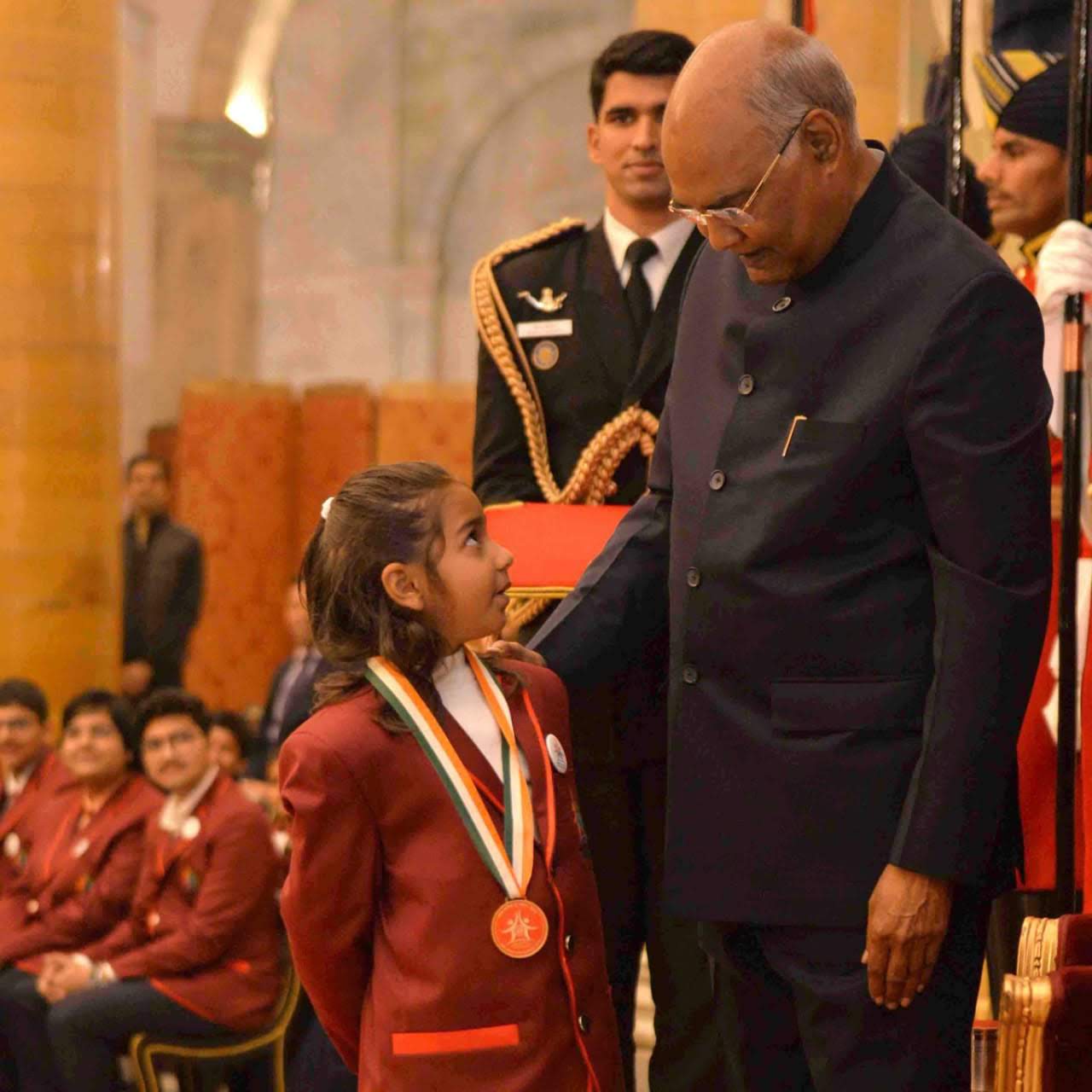
- Holistic Approach To Child Welfare: Unlike Many Traditional Initiatives That Focus Solely On Either Child Labor Or Education, "Mission Hope For Tomorrow" Takes A Comprehensive Approach. It Tackles The Root Causes Of Child Labor, Such As Poverty And Lack Of Education, While Simultaneously Providing Alternative Solutions Like Vocational Training, Financial Support For Families, And Community Awareness Programs.
- Focus On Education As A Path To Empowerment: The Initiative Prioritizes Education As The Key To Breaking The Cycle Of Child Labor. By Ensuring That Every Child Has Access To Quality Education, It Empowers Them To Achieve Their Dreams, Build A Sustainable Future, And Contribute Meaningfully To Society. This Focus On Education Sets It Apart From Initiatives That Focus Only On Short-Term Relief Or Rehabilitation.
- Community-Centric Model: "Mission Hope For Tomorrow" Emphasizes The Role Of The Community In Eradicating Child Labor. Rather Than Working In Isolation, The Initiative Engages Local Communities, Parents, And Children, Fostering Awareness And Collective Responsibility. This Community-Driven Approach Ensures Long-Term Success By Empowering People To Take Ownership Of The Change.
- Sustainable Solutions For Families: The Initiative Doesn’t Just Focus On Children But Also Supports The Entire Family Structure. By Providing Livelihood Programs, Financial Literacy Training, And Access To Healthcare, It Helps Parents Earn A Sustainable Income, Reducing Their Reliance On Sending Children To Work For Survival.
- Prevention Through Awareness And Advocacy: "Mission Hope For Tomorrow" Is Proactive In Its Approach, Focusing On Awareness And Prevention Rather Than Just Addressing The Consequences Of Child Labor. Through Advocacy And Public Education, It Works To Change Societal Attitudes, Raise Awareness About The Dangers Of Child Labor, And Promote The Rights Of Children Across India.
- Tailored Interventions: The Initiative Provides Personalized, Context-Specific Solutions Based On The Needs Of Each Community And Family. By Tailoring Interventions To Local Challenges, Such As Geographical Barriers Or Cultural Attitudes, It Ensures Greater Effectiveness And Relevance.
- Collaboration With Various Stakeholders: "Mission Hope For Tomorrow" Stands Out By Fostering Collaborations With Government Agencies, Ngos, Local Authorities, Schools, And The Private Sector. This Multi-Stakeholder Approach Creates A Larger Network Of Support And Resources, Maximizing The Impact Of The Initiative.
- Focus On Empowering Vulnerable Groups: While Many Initiatives Address Child Labor In General, This Mission Specifically Focuses On The Most Vulnerable Children—Those From Marginalized Communities, Rural Areas, And Economically Disadvantaged Backgrounds. It Seeks To Level The Playing Field By Providing Targeted Support To Those Who Need It The Most.
- Long-Term Commitment: The Initiative Doesn’t Just Focus On Immediate Results; It Is Committed To Long-Term Change. By Tracking Progress, Monitoring Outcomes, And Continuously Adapting Its Strategies, "Mission Hope For Tomorrow" Ensures That Its Efforts Lead To Sustainable Improvements In Children’s Lives, Education Systems, And Community Structures.
- Emotional And Psychological Support: Beyond Education And Livelihood, The Initiative Recognizes The Emotional And Psychological Toll That Child Labor Takes On Children. It Incorporates Mental Health Support, Counseling, And Life Skills Training To Help Children Overcome The Trauma Of Labor And Develop Resilience And Confidence.
"Mission Hope For Tomorrow" Different Is Its Comprehensive, Community-Centered, And Sustainable Approach To Ending Child Labor. By Focusing On Both The Child And The Family, Addressing Systemic Causes, And Working Towards Long-Term Change, It Creates A Powerful, Holistic Solution To One Of The Most Pressing Issues Facing India Today.
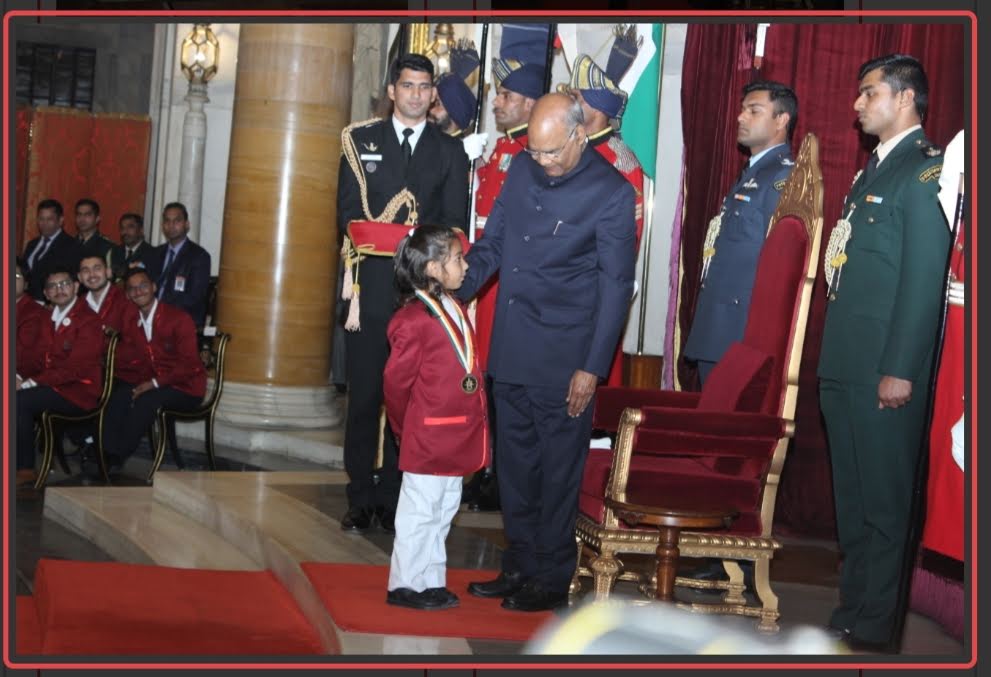 Mission Of The"Mission Hope For Tomorrow"Initiative
Mission Of The"Mission Hope For Tomorrow"Initiative
The Mission Of The "Mission Hope For Tomorrow" Initiative By Aadarsh Yuva Mission Human Welfare India Is To Eradicate Child Labor, Ensure Access To Quality Education, And Provide A Brighter, Safer Future For Every Child. The Initiative Aims To Break The Cycle Of Poverty And Exploitation By Empowering Children With The Tools They Need To Succeed, While Also Supporting Their Families And Communities Through Sustainable Solutions.
Elements Of The Mission Include:
- Eradicating Child Labor: The Mission Is Committed To Eliminating Child Labor In All Its Forms, Ensuring That Children Are Not Deprived Of Their Childhood And Are Free To Pursue Their Dreams And Aspirations Through Education.
- Providing Access To Education: Central To The Mission Is The Belief That Education Is The Key To A Better Future. The Initiative Focuses On Ensuring That Every Child Has Access To Quality Education, Creating Opportunities For Personal Growth, Empowerment, And Long-Term Success.
- Empowering Families: Recognizing That Child Labor Is Often Driven By Poverty, The Mission Works To Uplift Families Through Sustainable Livelihood Programs, Financial Literacy, And Economic Support, Reducing The Financial Burden That Drives Children Into The Workforce.
- Raising Awareness And Advocacy: "Mission Hope For Tomorrow" Advocates For Child Rights And Works To Raise Awareness About The Detrimental Effects Of Child Labor On Children’s Physical, Emotional, And Educational Development. It Calls For Societal Responsibility And Action In Protecting Children's Rights.
- Community Engagement: The Initiative Emphasizes The Importance Of Community Involvement In Ending Child Labor. By Fostering Community Awareness And Collaboration, It Ensures A Collective Effort In Addressing The Issue And Creating An Environment Where Children Can Thrive.
- Long-Term Change And Sustainability: The Mission Aims For Long-Term, Sustainable Solutions By Focusing Not Just On Immediate Relief But Also On Systemic Change, Improving Education Systems, Providing Resources For Families, And Working Towards The Complete Eradication Of Child Labor.
The Mission Of "Mission Hope For Tomorrow" Is To Create A World Where Children Can Dream Freely, Grow Without Fear, And Have The Opportunity To Build A Better Future Through Education And Empowerment.
The Vision Of The "Mission Hope For Tomorrow" Initiative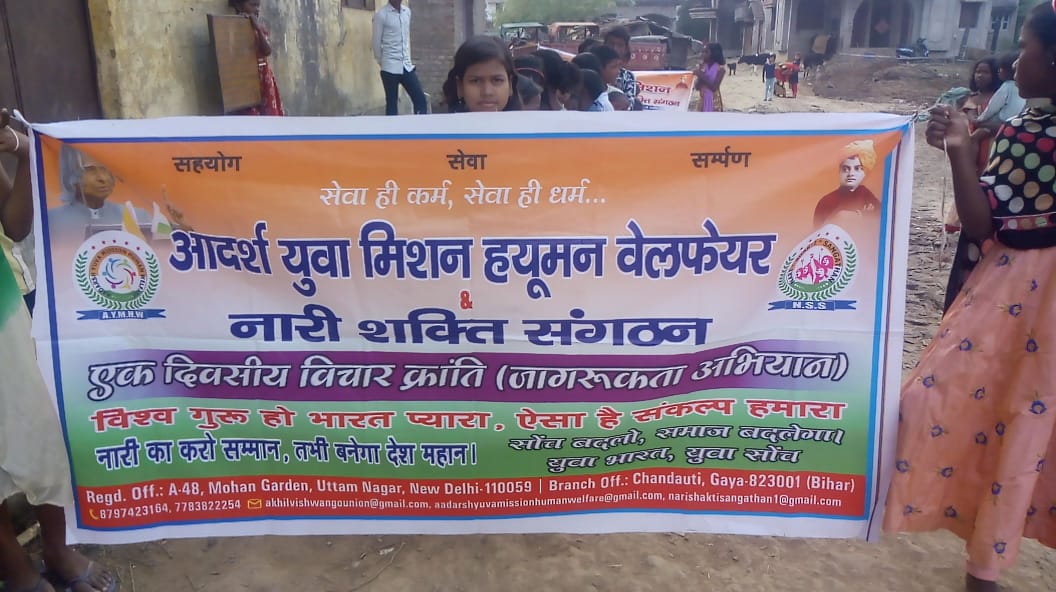
The Vision Of The "Mission Hope For Tomorrow" Initiative By Aadarsh Yuva Mission Human Welfare India Is To Create A World Where Every Child, Regardless Of Their Socio-Economic Background, Is Free From The Horrors Of Child Labor And Has The Opportunity To Dream, Learn, And Grow. This Vision Encompasses A Future Where Children Are Nurtured In Safe, Supportive Environments That Allow Them To Pursue Education And Fulfill Their Potential Without Fear Of Exploitation Or Hardship.
The Initiative Envisions A Society Where Child Labor Is Eradicated, And Children Can Enjoy Their Right To Education, Play, And Childhood. By Addressing Systemic Challenges Such As Poverty, Lack Of Access To Quality Education, And Social Inequalities, The Vision Seeks To Empower Families And Communities To Create Sustainable, Alternative Means Of Support, Allowing Children To Stay In School And Receive A Solid Foundation For A Better Future.
Furthermore, The Vision Of "Mission Hope For Tomorrow" Extends Beyond Simply Eliminating Child Labor. It Aims To Foster A Culture Of Compassion, Equality, And Opportunity, Where Children Are Not Seen As Economic Assets But As Individuals With Unique Aspirations And Potential. Through Education, Mentorship, And Community Engagement, The Initiative Envisions A Generation Of Educated, Empowered, And Resilient Youth Who Will Not Only Break The Cycle Of Child Labor But Will Become The Changemakers Of Tomorrow, Contributing To The Nation’s Growth And Development.
Ultimately, The Vision Of The Initiative Is To Build A Future Where No Child Is Deprived Of Their Childhood And Every Child Is Given The Resources And Opportunities They Need To Thrive, Ensuring A Compassionate, Just, And Prosperous Society For All.
Objectives Of "Mission Hope For Tomorrow"Initiative
- Eradicate Child Labor: The Primary Objective Of The Initiative Is To Eliminate Child Labor In India, Ensuring That Children Are No Longer Forced Into Hazardous Work, But Are Able To Experience Their Childhood Through Education, Play, And Personal Development.
- Ensure Access To Quality Education: Provide Every Child, Especially Those At Risk Of Child Labor, With Access To Quality Education, Ensuring That They Are Enrolled In Schools And Given The Resources Needed To Succeed Academically And Socially.
- Empower Families: Offer Families Alternative Sources Of Income By Providing Vocational Training, Livelihood Support, And Financial Literacy Programs, Reducing The Economic Pressures That Often Lead To Child Labor.
- Raise Awareness On Child Rights And Child Labor: Educate Communities, Families, And Society About The Rights Of Children, The Dangers Of Child Labor, And The Importance Of Education. This Includes Raising Awareness On Child Protection Laws And Policies.
- Strengthen Legal And Policy Frameworks: Advocate For Stronger Laws And Policies To Protect Children From Exploitation And Ensure That Child Labor Is Effectively Addressed By Local, State, And National Authorities.
- Create Safe And Nurturing Environments For Children: Work To Provide Safe Spaces For Children To Grow, Learn, And Develop By Partnering With Schools, Ngos, And Local Communities To Create Child-Friendly Environments Free From The Risks Of Labor.
- Promote Community Involvement And Responsibility: Engage Local Communities In The Fight Against Child Labor By Building Awareness, Fostering A Sense Of Collective Responsibility, And Encouraging Community-Driven Solutions To Protect Children.
- Promote Social And Emotional Well-Being: Support The Emotional And Psychological Well-Being Of Children Who Have Been Rescued From Child Labor By Providing Counseling, Mentorship, And Opportunities For Social Reintegration.
- Develop Monitoring And Evaluation Systems: Implement Systems To Monitor The Progress Of Children’s Education, Family Income Generation, And Overall Impact Of The Initiative, Ensuring That Results Are Measurable And That Efforts Are Adjusted For Maximum Effectiveness.
- Foster Collaboration With Government And Organizations: Collaborate With Government Agencies, Ngos, Educational Institutions, And The Private Sector To Strengthen Efforts Against Child Labor, Share Resources, And Create A United Front In Addressing The Issue.
- Promote Sustainable Development: Encourage Sustainable Practices Within Communities, Ensuring That Children’s Education And Family Income Generation Efforts Contribute To Long-Term Social And Economic Development.
- Provide Legal Aid And Support: Offer Legal Aid And Support To Children And Families Affected By Child Labor, Ensuring That Children’s Rights Are Upheld And Their Cases Are Addressed Through Proper Legal Channels.
Through These Objectives, "Mission Hope For Tomorrow" Aims To Create A Future Where Children Are Free From Exploitation And Have Access To The Education, Resources, And Opportunities Needed To Lead Fulfilling, Prosperous Lives.
Scope And Approach Of "Mission Hope For Tomorrow" Initiative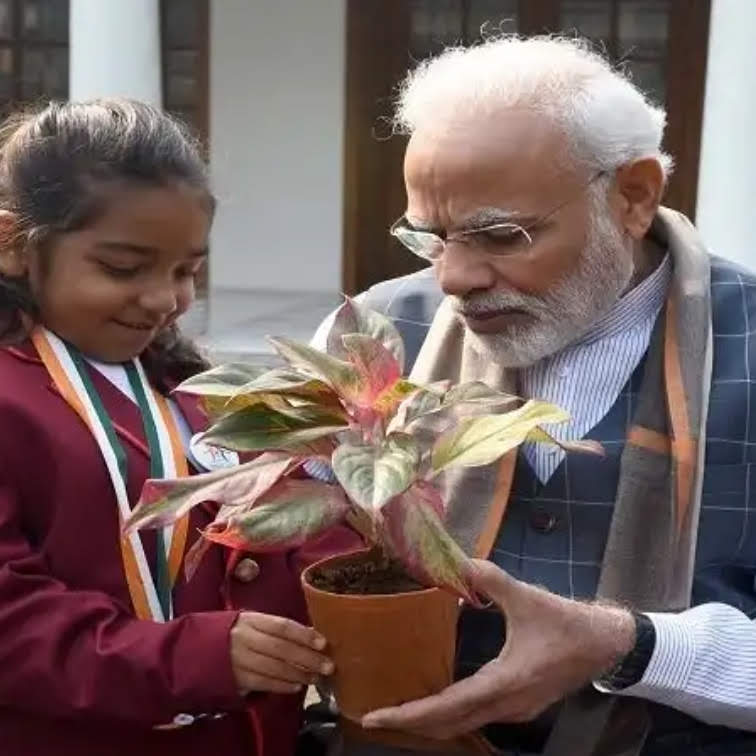
Scope: The "Mission Hope For Tomorrow" Initiative By Aadarsh Yuva Mission Human Welfare India Operates On A National Level, With A Particular Focus On Areas Where Child Labor Is Most Prevalent. The Initiative Aims To Reach Vulnerable Children, Especially In Rural And Underprivileged Urban Areas, Where Children Are At High Risk Of Exploitation. The Scope Includes:
- Geographical Reach: Focuses On Both Rural And Urban Locations Across India, Especially Regions With High Child Labor Rates, Including Slums, Remote Villages, And Economically Disadvantaged Communities.
- Target Population: Primarily Targets Children Engaged In Or At Risk Of Child Labor, Alongside Their Families. The Initiative Also Focuses On Marginalized Communities That Face Socio-Economic Challenges Contributing To Child Labor.
- Long-Term Impact: Seeks To Make A Lasting Change In Both The Lives Of Individual Children And Society At Large By Eradicating Child Labor, Ensuring Access To Quality Education, And Fostering Sustainable Community Development.
- Holistic Coverage: The Initiative’s Scope Covers Not Only The Immediate Needs Of Children But Also The Broader Issues Surrounding Child Labor, Such As Poverty, Lack Of Education, And Family Livelihood Challenges. It Works Towards Providing Comprehensive Solutions Through Educational Programs, Family Empowerment, Legal Protection, And Social Awareness.
Approach: The Approach Of "Mission Hope For Tomorrow" Is Comprehensive, Community-Centered, And Sustainable, Focusing On Both Short-Term Interventions And Long-Term Solutions To Eradicate Child Labor.
- Education As The Cornerstone: Education Is At The Heart Of The Initiative. The Approach Ensures That Every Child Is Enrolled In School And Provided With The Resources, Support, And A Conducive Learning Environment To Succeed. It Focuses On Preventing School Dropouts And Providing Educational Support To Children Who Were Previously Working.
- Family Empowerment: The Initiative Recognizes That Child Labor Often Stems From Economic Necessity. To Address This, "Mission Hope For Tomorrow" Empowers Families Through Livelihood Programs, Vocational Training, Financial Literacy, And Support For Income-Generating Activities. This Reduces The Financial Burden On Families And Lessens The Likelihood Of Children Being Sent To Work.
- Community Engagement: A Crucial Aspect Of The Initiative’s Approach Is Its Focus On Community Participation. The Program Encourages Local Communities To Take Ownership Of Child Protection By Raising Awareness, Mobilizing Resources, And Working Together To Eliminate Child Labor. Community Leaders, Parents, And Local Organizations Are Actively Involved In Driving Change.
- Advocacy And Awareness: The Initiative Advocates For Stronger Legal Protections For Children, Pushing For Policies That Ensure Education Is Accessible To All And Child Labor Is Abolished. Awareness Campaigns Educate The Public About The Importance Of Children's Rights, The Dangers Of Child Labor, And The Critical Need For Education In Building A Brighter Future For Every Child.
- Monitoring And Evaluation: The Initiative Employs A Robust Monitoring And Evaluation System To Track The Progress Of Children’s Education, The Reduction Of Child Labor Cases, And The Overall Success Of The Program. This Data-Driven Approach Ensures That The Initiative’s Efforts Are Effective And Adjusted As Necessary For Maximum Impact.
- Collaborative Partnerships: "Mission Hope For Tomorrow" Works In Partnership With Various Stakeholders, Including Government Bodies, Non-Governmental Organizations (Ngos), Schools, Local Businesses, And International Organizations. These Partnerships Strengthen The Collective Efforts To End Child Labor And Empower Communities.
- Sustainable Solutions: The Initiative Focuses On Creating Lasting Changes By Providing Long-Term Solutions Such As Ensuring Children’s Education Continuity, Building Community Resilience, And Empowering Families Economically. By Addressing The Root Causes Of Child Labor, It Strives For Systemic Change That Will Continue To Benefit Future Generations.
The "Mission Hope For Tomorrow" Initiative Combines A Wide-Reaching Scope With A Holistic And Sustainable Approach, Targeting The Systemic Issues That Perpetuate Child Labor. By Focusing On Education, Family Empowerment, Community Engagement, And Advocacy, The Initiative Seeks To Create A Future Where No Child Is Forced Into Labor And Every Child Has The Opportunity To Dream, Learn, And Thrive.
Services Provided By "Mission Hope For Tomorrow" Initiative
- Educational Support And Enrollment:
- School Enrollment: The Initiative Provides Support For Enrolling Children Who Are At Risk Of Child Labor Into Schools, Ensuring They Receive Formal Education.
- Educational Resources: Supplies Books, Uniforms, Stationery, And Other Necessary Materials To Children In Need, Ensuring They Have Everything Required To Succeed In School.
- Remedial Classes: Offers Additional Academic Support To Children Who Have Missed School Due To Labor, Helping Them Catch Up With Their Peers And Continue Their Education Without Feeling Left Behind.
- Vocational Training For Families:
- Skill Development: Provides Vocational Training Programs For Parents And Caregivers To Help Them Develop New Skills And Improve Their Employability, Thereby Reducing The Financial Pressure That Often Leads To Child Labor.
- Income-Generating Activities: Supports Families With Income-Generating Opportunities Such As Small Business Development, Crafts, And Agricultural Programs To Ensure They Can Sustain Themselves Without Relying On Child Labor.
- Health And Well-Being Support:
- Healthcare Services: Offers Medical Check-Ups, Vaccinations, And Healthcare Services To Children And Their Families, Ensuring They Are Healthy And Able To Attend School Or Work.
- Psychosocial Support: Provides Counseling And Emotional Support To Children Who Have Experienced Trauma Due To Child Labor, Helping Them Reintegrate Into School And Society With Confidence And Resilience.
- Legal Aid And Advocacy:
- Legal Assistance: Offers Legal Support To Children And Families, Helping Them Navigate The Legal Systems And Seek Justice For Children Exploited In Labor.
- Advocacy For Children’s Rights: Works To Advocate For Stronger Child Protection Laws And Policies, Lobbying For The Enforcement Of Child Labor Laws And The Protection Of Children’s Rights To Education And Safety.
- Awareness And Advocacy Campaigns:
- Community Education: Conducts Awareness Campaigns To Educate Communities On The Detrimental Effects Of Child Labor And The Importance Of Children’s Rights To Education, Safety, And A Future Free From Exploitation.
- Public Outreach: Partners With Local Governments, Ngos, Schools, And Media To Spread Awareness About The Initiative And Garner Public Support For The Cause.
- Community Engagement And Mobilization:
- Community-Based Initiatives: Engages Local Communities To Actively Participate In Eradicating Child Labor Through Awareness Programs, Community Meetings, And Involvement In Local Advocacy Efforts.
- Local Leadership Development: Empowers Community Leaders And Local Organizations To Take Ownership Of The Mission, Promoting Long-Term Solutions And Local Accountability In The Fight Against Child Labor.
- Emergency Relief And Support:
- Immediate Relief: Provides Immediate Assistance To Children Rescued From Child Labor, Including Safe Shelter, Food, And Care, As Well As Support For Reintegration Into Formal Education.
- Rehabilitation Programs: Offers Rehabilitation Services For Children Who Have Been Removed From Hazardous Work, Helping Them Transition Into Normal Life Through Education And Social Support.
- Monitoring And Evaluation:
- Tracking Progress: Monitors The Progress Of Children’s Education, Their Transition Out Of Child Labor, And The Overall Impact Of The Initiative To Ensure That Goals Are Met And That Children’s Well-Being Is Continually Supported.
- Impact Assessment: Regularly Assesses The Success Of The Initiative In Achieving Its Goals, Making Adjustments As Necessary To Ensure The Effectiveness Of Its Services And Interventions.
- Empowerment Through Capacity Building:
- Capacity Building For Parents: Trains Parents On Their Rights, Child Welfare Laws, And Ways To Support Their Children’s Education, Fostering A More Supportive And Informed Environment For Children.
- Youth Leadership Programs: Encourages Older Children, Who Are At Risk Of Child Labor, To Participate In Leadership Training Programs, Providing Them With Skills And Confidence To Lead In Their Communities.
- Partnerships With Schools And Local Authorities:
- School Partnerships: Works Closely With Schools To Ensure That Children From Vulnerable Backgrounds Are Supported, Enrolled, And Retained In The Education System.
- Collaboration With Local Authorities: Collaborates With Government And Law Enforcement Agencies To Enforce Child Protection Laws, Rescue Children From Exploitative Conditions, And Promote Children’s Rights At The Community And Policy Levels.
Through These Services, "Mission Hope For Tomorrow" Aims To Provide Comprehensive Support To Children And Their Families, Enabling Them To Break Free From The Cycle Of Child Labor And Creating A Future Where Every Child Can Dream, Learn, And Grow In A Safe And Supportive Environment.
Target Beneficiaries Of "Mission Hope For Tomorrow" Initiative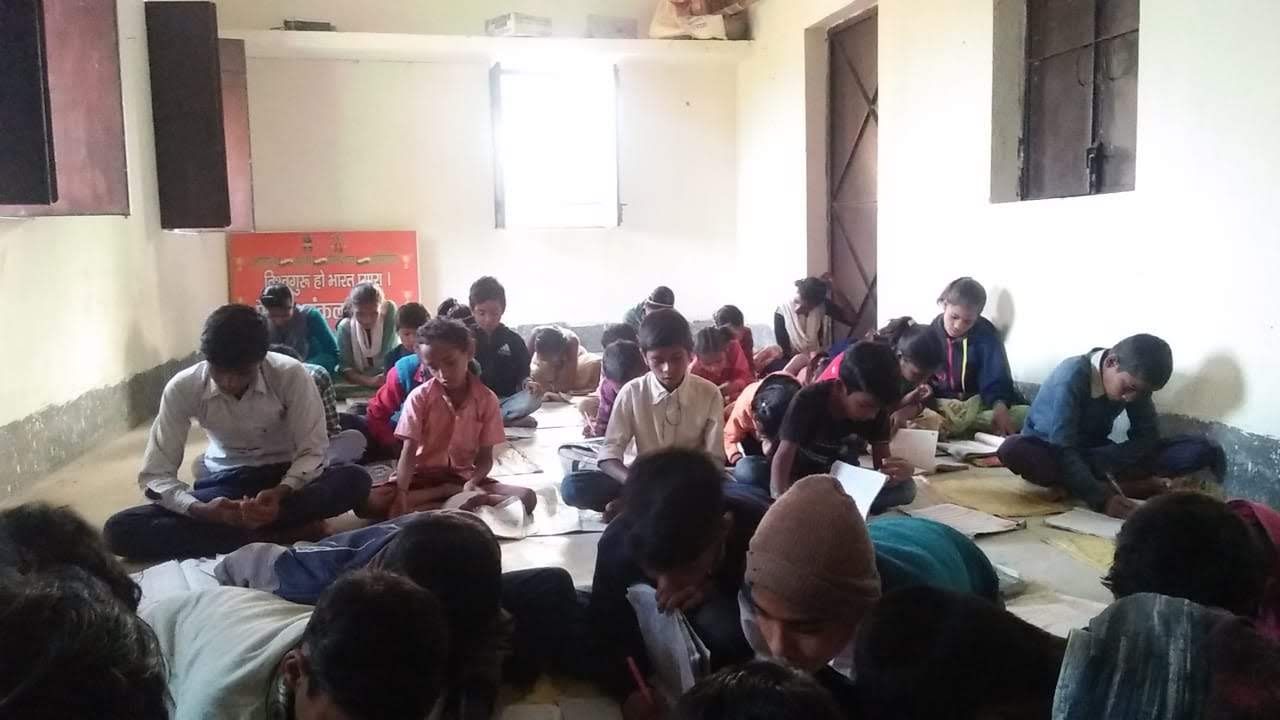
- Children Engaged In Child Labor: Children Who Are Currently Working In Hazardous Or Exploitative Conditions Are The Primary Beneficiaries Of This Initiative.
- Children At Risk Of Child Labor: Children From Impoverished Families Or Marginalized Communities Who Are At Risk Of Being Pushed Into Child Labor Due To Economic Pressures.
- School-Age Children: Children Who Are Of School-Going Age But Are Out Of School Or Have Dropped Out Due To Work Or Other Social Reasons.
- Marginalized Communities: Children From Low-Income Families, Tribal Communities, Or Rural Areas Where Child Labor Is Prevalent And Education Access Is Limited.
- Underprivileged Families: Families Struggling With Poverty And Unemployment Who Rely On Their Children’s Earnings, Requiring Alternative Support And Empowerment.
- Street-Connected Children: Children Living Or Working On The Streets Who Are Highly Vulnerable To Exploitation And Child Labor.
- Female Children: Girls Who Are Often Disproportionately Affected By Child Labor, Especially In Domestic Work, And Those Facing Gender-Based Barriers To Education.
- Children From Minority Communities: Children From Marginalized Religious, Ethnic, Or Caste Communities Who Face Social Discrimination And Are More Vulnerable To Child Labor.
- Children With Special Needs: Children With Disabilities Or Other Special Needs Who Require Tailored Support To Access Education And Protection From Exploitation.
- Parents Of Children In Labor: Families And Caregivers Of Children Engaged In Labor, Who Will Benefit From Vocational Training And Alternative Income-Generation Programs.
- Community Leaders: Local Leaders Who Will Be Trained And Empowered To Advocate Against Child Labor And Promote Children’s Rights In Their Communities.
- Schools And Teachers: Educational Institutions And Educators Who Will Benefit From Awareness And Training On How To Support Children From Labor Backgrounds.
- Youth From Vulnerable Backgrounds: Young People In At-Risk Groups, Especially Those Nearing The Working Age, Who Need Educational Support To Transition Into Meaningful Work Opportunities.
- Rehabilitated Children: Children Who Have Been Rescued From Child Labor And Are Reintegrated Into Education, Requiring Support And Rehabilitation Programs.
- Government Authorities: Local Government And Law Enforcement Officials Who Are Supported In Implementing And Enforcing Child Protection Laws And Child Labor Policies.
- Local Ngos And Community Organizations: Non-Governmental Organizations And Community Groups Working On Child Protection That Will Benefit From Partnerships, Resources, And Training.
- Health Care Providers: Medical Professionals Who Will Support The Health And Well-Being Of Children And Their Families, Providing Medical Check-Ups And Counseling Services.
- Public Awareness Audiences: The Broader Public Who Will Benefit From Awareness Campaigns About Child Labor, Education, And Children’s Rights.
- Corporate Sector: Companies And Businesses That Are Encouraged To Adopt Child Labor-Free Policies And Contribute To Corporate Social Responsibility Initiatives Supporting Children’s Education And Welfare.
- International Organizations: Global Partners Working On Child Protection And Rights Who Will Collaborate To Share Knowledge And Implement Best Practices For Tackling Child Labor.
Through These Target Beneficiaries, "Mission Hope For Tomorrow" Aims To Create A Broad, Lasting Impact On Children, Families, Communities, And Society As A Whole, Working To Eliminate Child Labor And Provide Every Child With The Opportunity For A Brighter Future.
Activities Of "Mission Hope For Tomorrow" Initiative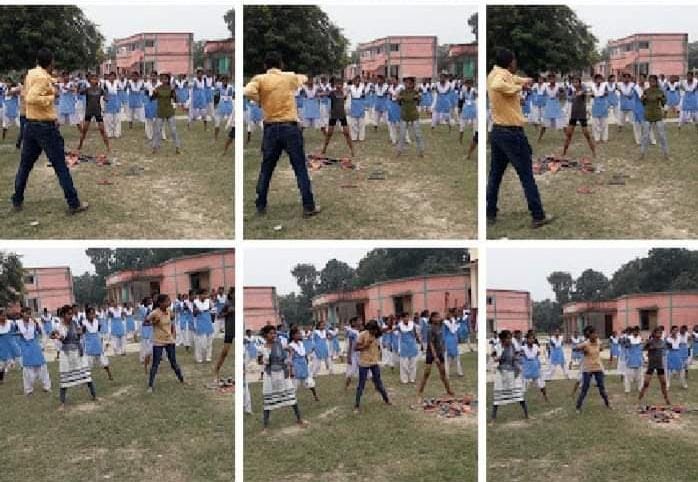
- Child Education Enrollment Campaigns: Actively Enrolling Children At Risk Of Or Engaged In Labor Into Schools, Ensuring They Receive Formal Education And Necessary Resources Like Books, Uniforms, And Stationery.
- Awareness And Advocacy Campaigns: Conducting Public Awareness Campaigns To Educate Communities, Parents, And Society About The Dangers Of Child Labor And The Importance Of Education For Every Child.
- Vocational Training For Families: Providing Vocational Skills And Training To Parents Or Guardians Of Child Laborers, Offering Them Alternative Livelihood Options To Reduce Dependence On Child Labor For Family Income.
- Community Workshops And Seminars: Organizing Workshops And Seminars For Community Members, Parents, Teachers, And Local Leaders To Raise Awareness About Child Rights, Legal Frameworks, And The Benefits Of Education.
- Child Labor Prevention Programs: Identifying High-Risk Communities And Implementing Prevention Programs That Inform Families About The Long-Term Benefits Of Education And Provide Alternatives To Sending Children To Work.
- Legal Support And Advocacy: Offering Legal Aid And Guidance To Children And Families Affected By Child Labor, Helping Them Navigate Legal Systems And Secure Justice For Child Labor Violations.
- School Remedial Classes And Tutoring: Providing Extra Academic Support, Such As Remedial Classes Or Tutoring, For Children Who Have Been Out Of School For Long Periods Due To Work, Helping Them Catch Up With Their Peers.
- Rescue And Rehabilitation Of Children: Coordinating The Rescue Of Children From Hazardous Labor Conditions, Providing Them With Immediate Shelter, Medical Care, And Reintegration Into The Education System.
- Health And Psychosocial Support: Offering Medical Check-Ups, Vaccinations, And Mental Health Support To Children Who Have Been Subjected To Labor, Helping Them Recover Physically And Emotionally.
- Building Safe Learning Environments: Collaborating With Schools And Local Authorities To Create Safe, Supportive, And Child-Friendly Environments In Schools, Ensuring Children Feel Welcome And Protected.
- Parent Engagement And Support: Organizing Meetings And Outreach Programs To Educate Parents On The Importance Of Education And The Negative Effects Of Child Labor, While Offering Financial Literacy And Livelihood Skills Training.
- Monitoring And Data Collection: Continuously Monitoring The Progress Of Children’s Education, Family Income Levels, And The Effectiveness Of Intervention Programs, Collecting Data To Refine Strategies And Improve Outcomes.
- Partnerships With Local Authorities: Partnering With Local Governments, Law Enforcement Agencies, And Other Ngos To Create A Unified Approach To Addressing Child Labor And Enforcing Child Protection Laws.
- Sustainability And Community Empowerment: Engaging Communities In Long-Term Sustainability Programs, Including Awareness Campaigns, Eco-Friendly Practices, And Other Initiatives That Support Families And Reduce The Need For Child Labor.
- Involvement In Policy Advocacy: Lobbying For Stronger Child Protection Laws And Policies At The Local, State, And National Levels, Advocating For The Enforcement Of Child Labor Laws And Improved Access To Education For Marginalized Communities.
- Skill Development For Youth: Offering Training And Mentorship Programs To Older Children And Youth At Risk Of Labor, Equipping Them With Skills That Can Help Them Secure Sustainable Employment In The Future.
- Teacher Training Programs: Training Educators And School Staff On The Unique Challenges Faced By Children From Labor Backgrounds, Ensuring That They Can Provide Appropriate Support And Care To These Children In The School Environment.
- Cultural And Recreational Activities: Organizing Cultural And Recreational Events For Children To Help Them Heal From The Trauma Of Child Labor, Providing Them With Opportunities For Creative Expression And Socialization.
- Support For Dropout Students: Identifying Children Who Have Dropped Out Of School Due To Labor And Providing Them With Support To Return To School, Including Financial Assistance, Tutoring, And A Supportive School Environment.
- Global And Local Partnerships: Collaborating With International Organizations, Local Ngos, And Community-Based Organizations To Share Resources, Expertise, And Best Practices In Combating Child Labor And Promoting Education For All Children.
These Activities Are Designed To Create A Holistic Approach To Eliminating Child Labor, Promoting Education, Empowering Families, And Ensuring The Overall Well-Being Of Children, Ultimately Leading To A Future Where Every Child Is Free To Dream And Pursue Their Potential.
Working Mechanism Of "Mission Hope For Tomorrow" Initiative
The "Mission Hope For Tomorrow" Initiative Functions Through A Well-Coordinated Mechanism That Combines Direct Intervention, Community Engagement, Advocacy, And Partnerships To Tackle Child Labor And Ensure Every Child Has Access To Education. The Initiative’s Working Mechanism Is Designed To Create Long-Lasting Change By Addressing The Root Causes Of Child Labor And Providing Sustainable Solutions. Here’s A Breakdown Of How It Works, With Examples:
- Community Awareness And Mobilization
- How It Works: The Initiative Actively Raises Awareness In Communities About The Harmful Effects Of Child Labor And The Importance Of Education. This Is Achieved Through Workshops, Seminars, And Outreach Programs Where Community Leaders, Parents, And Teachers Are Educated About Children’s Rights And The Need For Their Protection.
- Example: In Rural Villages Where Child Labor Is Common, The Initiative Organizes Community Workshops To Inform Families About Local Laws Regarding Child Labor And Their Children’s Right To Attend School. After Such Awareness Programs, Families Are More Likely To Send Their Children To School Rather Than Sending Them To Work.
- Enrollment And Education Support
- How It Works: One Of The Core Activities Of The Initiative Is To Ensure Children Who Are At Risk Of Or Involved In Child Labor Are Enrolled In Schools. The Initiative Provides Educational Support Such As School Fees, Uniforms, Books, And Transportation, Ensuring That These Children Are Not Deprived Of An Education.
- Example: In Urban Slums Where Children Are Often Working In Informal Sectors Like Street Vending, The Initiative Collaborates With Local Schools To Offer Free School Supplies And Bus Fare To Make Education Accessible. Children Who Had Been Working On The Streets Now Attend School Regularly.
- Family Empowerment Through Livelihood Programs
- How It Works: Recognizing That Economic Hardship Often Forces Children Into Labor, The Initiative Empowers Families By Providing Vocational Training, Financial Literacy Programs, And Access To Small-Scale Income-Generating Opportunities. This Helps Reduce The Reliance On Children’s Earnings And Improves The Overall Financial Stability Of The Household.
- Example: In A Village Where Many Families Depend On Their Children To Work In The Fields, The Initiative Offers Skill Development Workshops In Areas Such As Tailoring And Pottery. This Enables Parents To Create Alternative Income Sources, Alleviating The Need For Their Children To Work.
- Rescue And Rehabilitation Of Child Laborers
- How It Works: When Children Are Found In Exploitative Working Conditions, The Initiative Coordinates With Local Authorities And Law Enforcement To Rescue Them. Once Rescued, The Children Are Provided With Medical Care, Counseling, And Reintegration Into Education.
- Example: In A Factory Where Children Are Found Working Long Hours, The Initiative, In Collaboration With Local Child Welfare Organizations And Law Enforcement, Rescues The Children And Provides Them With A Safe Shelter. They Are Then Enrolled In Remedial Education Programs To Catch Up On Their Missed Schooling.
- Psychosocial Support And Counseling
- How It Works: Child Laborers Often Face Psychological Trauma, So The Initiative Includes Counseling And Emotional Support Services To Help Children Recover And Reintegrate Into Their Communities And Schools.
- Example: After Rescuing A Group Of Children Working In Hazardous Conditions In A Mine, The Initiative Offers Group Counseling Sessions To Help The Children Deal With The Trauma They’ve Experienced. Psychological Support Ensures The Children Can Adjust To Their New Life In School And Society.
- Legal Aid And Advocacy
- How It Works: The Initiative Provides Legal Assistance To Children And Families Affected By Child Labor, Ensuring That Children’s Rights Are Upheld In The Legal System. Additionally, The Initiative Advocates For Stronger Child Protection Laws And Policies.
- Example: If A Child Is Forced Into Labor By A Family Member Or Employer, The Initiative Helps The Child And Their Family Navigate The Legal System To Ensure Justice Is Served. This Includes Working With Local Authorities To File Complaints And Ensure That The Responsible Parties Are Held Accountable.
- Monitoring And Impact Assessment
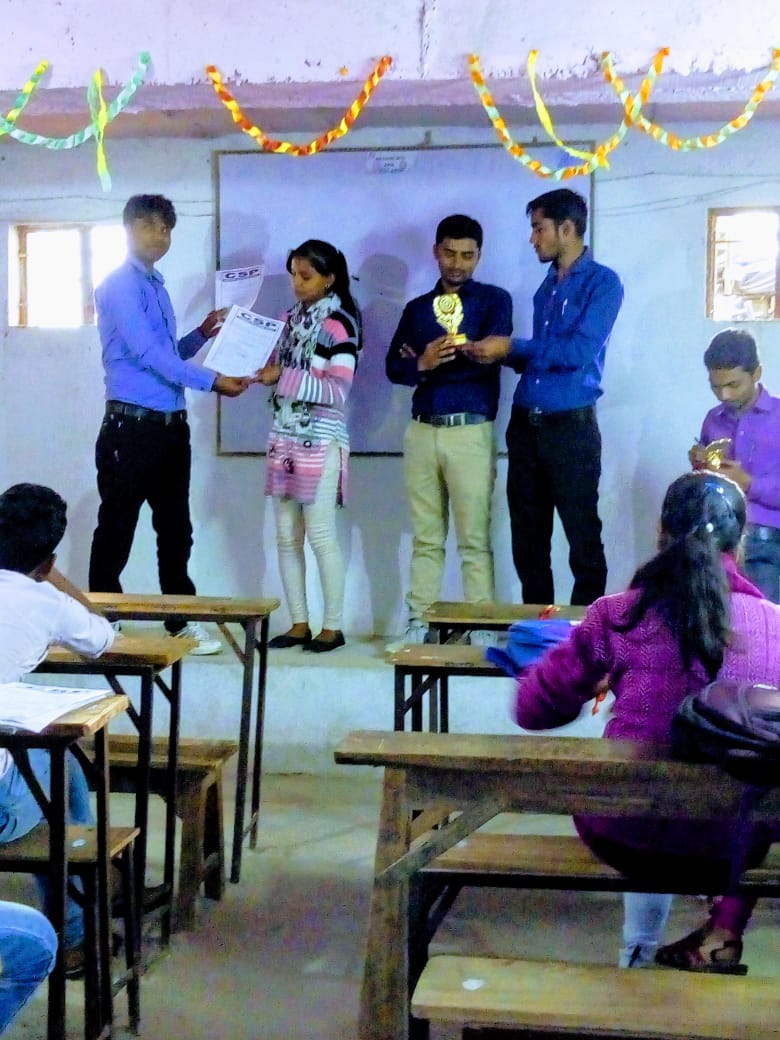
- How It Works: Regular Monitoring And Evaluation Are Essential To The Success Of The Initiative. The Impact Of Educational Support, Family Empowerment, And Legal Advocacy Is Assessed Through Follow-Up Surveys, Interviews, And Data Collection To Ensure Long-Term Success.
- Example: The Initiative Conducts Quarterly Assessments In Schools Where Children Have Been Enrolled. These Assessments Track The Children’s Academic Progress And Identify Any Barriers To Their Continued Education, Such As Bullying Or Insufficient School Resources, So Interventions Can Be Made.
- Partnerships With Schools, Ngos, And Government Bodies
- How It Works: The Initiative Works Closely With Schools, Local Ngos, Government Agencies, And Other Stakeholders To Create A Unified Approach To Ending Child Labor And Promoting Education. These Partnerships Help Pool Resources, Share Knowledge, And Increase The Reach Of The Initiative.
- Example: The Initiative Partners With A Local School To Offer After-School Programs Specifically For Children Rescued From Labor. Collaborating With Ngos That Specialize In Child Welfare, The Initiative Provides Psychological Support And Social Reintegration Programs In Coordination With Schools And Healthcare Providers.
- Sustainable Change Through Local Leadership
- How It Works: By Training Local Leaders, The Initiative Ensures That The Fight Against Child Labor Is Rooted Within The Community. These Leaders Are Empowered To Advocate For Children’s Rights And Drive Community-Based Solutions To Child Labor.
- Example: In A Village, Local Community Leaders Are Trained By The Initiative On How To Detect And Report Cases Of Child Labor. These Leaders Become Advocates For Education And Child Protection, Encouraging Other Families To Keep Children In School Rather Than Sending Them To Work.
- Collaboration With Corporate Sector
- How It Works: The Initiative Partners With Businesses To Promote Corporate Social Responsibility (Csr) Programs That Support Child Labor-Free Environments And Fund Educational Initiatives.
- Example: A Partnership With A Local Textile Company Ensures That All Children In The Company’s Supply Chain And Surrounding Communities Are Educated And Not Involved In Child Labor. The Company Contributes To Funding Educational Programs And Creating Awareness About Child Labor In Its Industry.
Tools And Resources Of "Mission Hope For Tomorrow" Initiative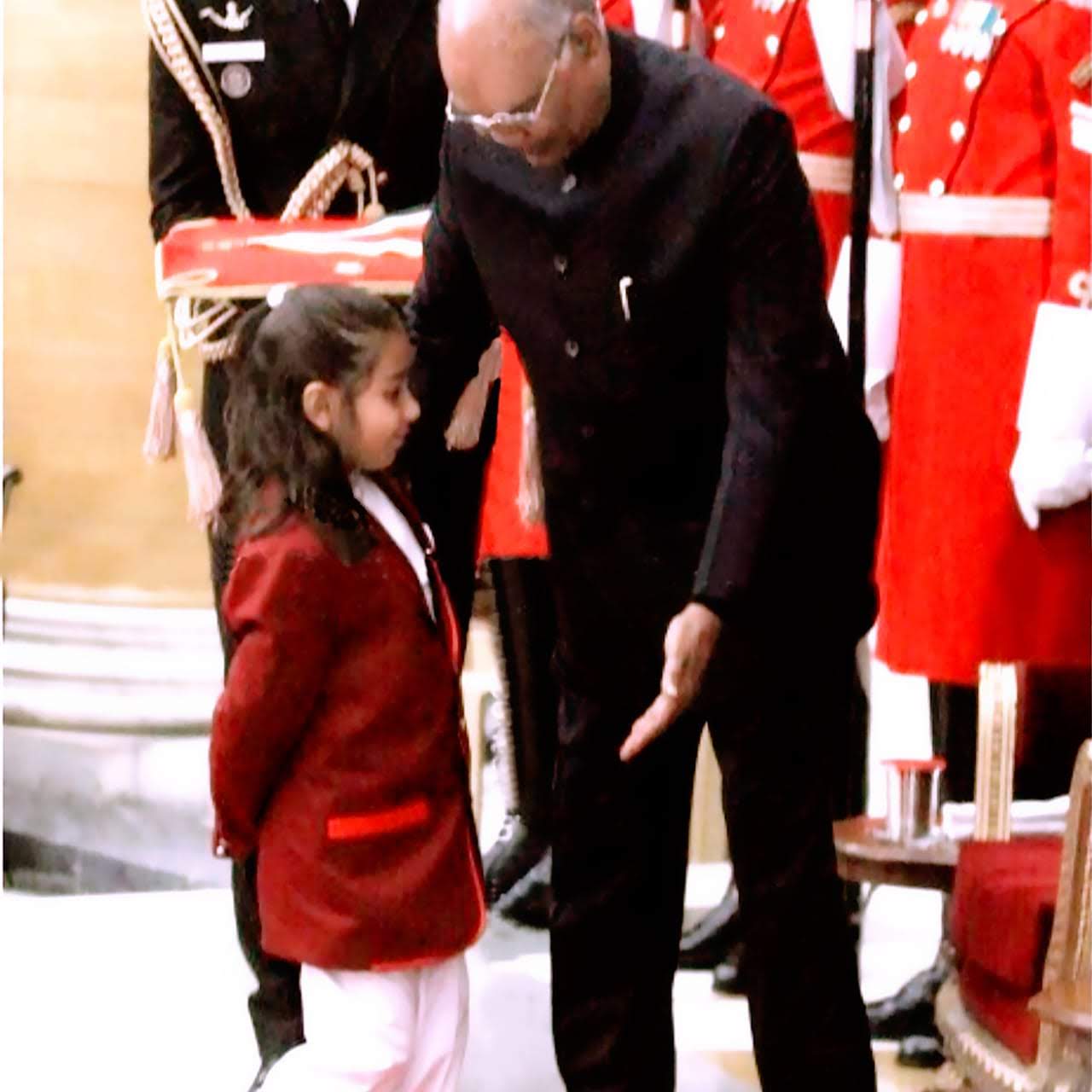
The "Mission Hope For Tomorrow" Initiative Relies On A Range Of Tools And Resources To Effectively Address The Issue Of Child Labor, Provide Education, And Empower Families. These Tools And Resources Enable The Initiative To Reach Its Goals And Ensure Sustainable, Long-Term Change For The Children And Communities It Serves.
- Educational Tools And Materials
- School Supplies: Providing Children With Books, Stationery, Uniforms, And Other Necessary School Supplies To Ensure They Can Attend School Without Financial Hindrances.
- Learning Materials: Offering Digital And Printed Educational Resources, Including Learning Modules, Activity Kits, And Textbooks To Support Children In Their Studies.
- Remedial Education Kits: Special Educational Materials Designed For Children Who Have Fallen Behind Due To Work, Enabling Them To Catch Up With Their Peers.
- Technology And Digital Platforms
- E-Learning Platforms: Providing Children With Access To Online Learning Platforms Where They Can Access Courses, Tutorials, And Interactive Lessons To Supplement Their Education, Especially In Remote Areas.
- Data Collection Tools: Using Digital Tools To Track And Monitor The Progress Of Children, Families, And Communities, Including School Attendance, Academic Performance, And The Number Of Children Involved In Labor.
- Mobile Apps: Apps That Provide Real-Time Data And Updates, Ensuring That Teachers, Community Leaders, And Social Workers Can Stay Connected And Updated On The Progress Of Children And Families.
- Vocational Training Programs
- Skill Development Resources: Offering Tools, Equipment, And Materials For Vocational Training Programs Such As Tailoring, Carpentry, And Other Trade Skills, Which Help Empower Parents And Caregivers To Earn A Living Without Depending On Child Labor.
- Workshops And Seminars: Organizing Training Sessions And Workshops For Adults To Develop Skills In Areas Such As Small Business Management, Financial Literacy, And Sustainable Farming Techniques.
- Health And Well-Being Resources
- Healthcare Services: Providing Access To Basic Healthcare Services Such As Regular Check-Ups, Vaccinations, And Health Screening To Children And Families To Ensure Their Physical Well-Being.
- Mental Health Support: Offering Counseling And Psychological Services For Children Who Have Been Rescued From Child Labor, Helping Them Cope With Trauma And Integrate Back Into School And Society.
- Health Education Materials: Distributing Informational Pamphlets, Posters, And Workshops To Families About Preventive Healthcare, Hygiene, And Child Nutrition.
- Legal Resources And Support
- Legal Aid And Guidance: Providing Legal Tools, Including Access To Pro-Bono Lawyers And Legal Counsel For Families And Children Affected By Child Labor To Seek Justice And Remedy.
- Advocacy Toolkits: Developing Toolkits For Community Leaders And Advocates To Engage In Awareness Campaigns About Children’s Rights, Child Labor Laws, And The Importance Of Education.
- Community Engagement And Mobilization Resources
- Community Awareness Materials: Producing Pamphlets, Posters, And Banners That Explain The Risks Of Child Labor, Children’s Rights, And The Benefits Of Education For Distribution In Local Communities.
- Public Service Announcements (Psas): Utilizing Radio, Tv, And Social Media Platforms To Disseminate Information On Child Labor, Legal Protections, And The Availability Of Support For Families.
- Local Volunteers And Networks: Leveraging Local Volunteers And Community-Based Organizations To Mobilize Support, Monitor Children’s Welfare, And Advocate For Child Protection Laws And Education Policies.
- Monitoring And Evaluation Tools
- Tracking Software: Implementing Software To Track The Enrollment And Academic Progress Of Children, Monitor Family Income Levels, And Assess The Overall Impact Of The Initiative.
- Surveys And Feedback Mechanisms: Conducting Regular Surveys And Interviews With Children, Parents, And Community Members To Evaluate The Success Of Programs And Gather Insights For Improvement.
- Impact Assessment Frameworks: Using Predefined Frameworks To Assess The Effectiveness Of Different Interventions And Ensuring That The Desired Goals—Such As The Reduction Of Child Labor And Increased School Attendance—Are Achieved.
- Collaborative Partnerships And Networks
- Partnerships With Ngos And Government Bodies: Partnering With Local And National Governments, Other Ngos, And International Organizations To Share Resources, Knowledge, And Expertise In Combating Child Labor And Promoting Children’s Rights.
- Corporate Partnerships: Collaborating With The Corporate Sector For Funding, Awareness Campaigns, And Creating Child Labor-Free Supply Chains.
- Fundraising And Financial Resources
- Donor Networks And Fundraising Campaigns: Raising Funds Through Individual Donations, Corporate Sponsorships, And Philanthropic Partnerships To Support The Initiative’s Educational, Health, And Legal Programs.
- Microfinance And Grant Programs: Offering Financial Support In The Form Of Small Grants Or Loans To Families To Help Them Start Small Businesses And Create Alternative Sources Of Income.
- Government Policy And Advocacy Resources
- Policy Advocacy Tools: Creating Policy Briefs, Reports, And Recommendations For Engaging With Policymakers To Strengthen Child Labor Laws And Improve The Educational System.
- Lobbying Resources: Engaging Legal Experts, Advocates, And Influencers To Lobby For The Enforcement Of Child Protection Policies And Better Implementation Of Existing Laws Against Child Labor.
- Social Media And Communication Resources
- Social Media Platforms: Utilizing Social Media Channels Like Facebook, Twitter, Instagram, And Youtube To Share Stories Of Success, Raise Awareness, And Engage The Public In The Initiative’s Goals.
- Campaign Materials: Developing Online And Offline Campaigns To Encourage The Public To Take Action Against Child Labor And Support The Mission.
- Cultural And Recreational Resources
- Recreational Programs: Organizing Extracurricular Activities, Such As Art, Music, And Sports, To Help Children Affected By Labor Express Themselves, Heal, And Enjoy Their Childhood.
- Cultural Exchange And Celebrations: Hosting Community Events, Festivals, And Cultural Exchanges To Promote Education, Raise Awareness, And Celebrate The Rights And Achievements Of Children.
By Leveraging These Tools And Resources, "Mission Hope For Tomorrow" Is Able To Address The Multifaceted Challenges Of Child Labor, Provide Comprehensive Support To Families, And Ensure That Every Child Has The Opportunity To Receive An Education And Live A Life Free From Exploitation.
Potential Challenges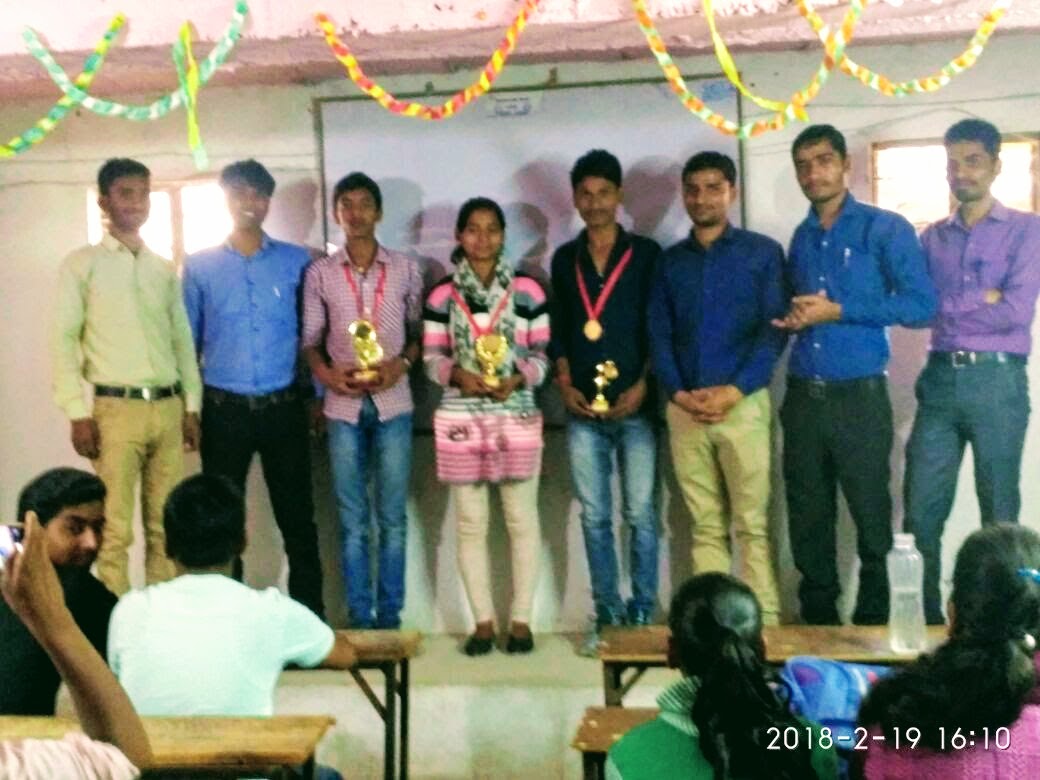
- Lack Of Awareness: Many Communities May Not Be Fully Aware Of The Dangers And Long-Term Consequences Of Child Labor, Making It Harder To Gain Support For The Initiative.
- Cultural Barriers: In Some Cultures, Child Labor May Be Seen As A Norm, Making It Challenging To Convince Families To Send Children To School Instead Of Work.
- Economic Pressures: Families Living In Poverty May Rely On Their Children's Income To Survive, Which Could Make It Difficult To Stop Child Labor Without Providing Alternative Sources Of Income.
- Limited Access To Education: In Many Areas, Quality Education May Be Inaccessible Or Unaffordable, Leading Children To Continue Working Rather Than Attending School.
- Government Support: Lack Of Strong Government Policies And Enforcement Against Child Labor Could Hinder The Success Of The Initiative.
- Resource Limitations: The Initiative May Face Budget Constraints That Limit Its Ability To Implement Widespread Programs Effectively.
- Resistance From Employers: Industries Or Employers Benefiting From Cheap Child Labor May Resist Changes, Making It Challenging To Change Attitudes Toward Child Labor In Certain Sectors.
- Unforeseen Economic Crises: Natural Disasters, Pandemics, Or Other Economic Downturns May Force Children Back Into The Workforce, Undermining The Progress Made.
- Legal Challenges: In Some Regions, Weak Legal Frameworks Or Corruption May Prevent Laws From Being Enforced, Allowing Child Labor To Continue.
- Social Stigma: Children Who Are Removed From Work May Face Social Stigma And Discrimination From Peers Or Adults, Creating Emotional And Psychological Barriers.
- Overcoming Family Dynamics: Families May Resist The Initiative Due To Traditional Values, Such As The Belief That Children Should Contribute To The Household Financially.
- Tracking And Monitoring: Monitoring And Tracking The Progress Of Child Labor Eradication Can Be Difficult, Especially In Remote Or Informal Sectors.
- Workplace Safety: Some Children May Be Involved In Hazardous Labor, And Transitioning Them Into Safer Work Or Education Environments May Present Challenges In Terms Of Safety And Welfare.
- Corruption In Local Authorities: Local Officials May Be Unwilling Or Unable To Enforce Regulations Against Child Labor Due To Corruption Or Lack Of Resources.
- Language And Communication Barriers: In Areas With Multiple Languages Or Dialects, Communication May Be A Barrier To Engaging Local Communities Effectively.
- Misinformation: There May Be Misinformation About The Initiative, Leading To Distrust Or Resistance Among The Population.
- Inadequate Health And Social Services: The Initiative Might Struggle To Provide Adequate Healthcare, Nutrition, And Social Services To Displaced Children.
- Sustaining Long-Term Engagement: Keeping Communities Engaged Over The Long Term, Particularly After Initial Success, Can Be Challenging As Attention Wanes Or New Issues Arise.
- Inadequate Training For Educators: If Teachers Are Not Well-Trained To Handle Children From Child Labor Backgrounds, The Educational Experience May Not Be Effective Or Welcoming.
- Competition With Other Initiatives: Other Initiatives Or Ngos Might Compete For The Same Resources, Which Could Dilute Efforts And Impact The Success Of "Mission Hope For Tomorrow."
These Challenges Need To Be Addressed Through A Multifaceted Approach, Including Government Collaboration, Community Education, Sustainable Alternatives, And Ensuring The Long-Term Sustainability Of The Initiative.
The Government Of India Initiatives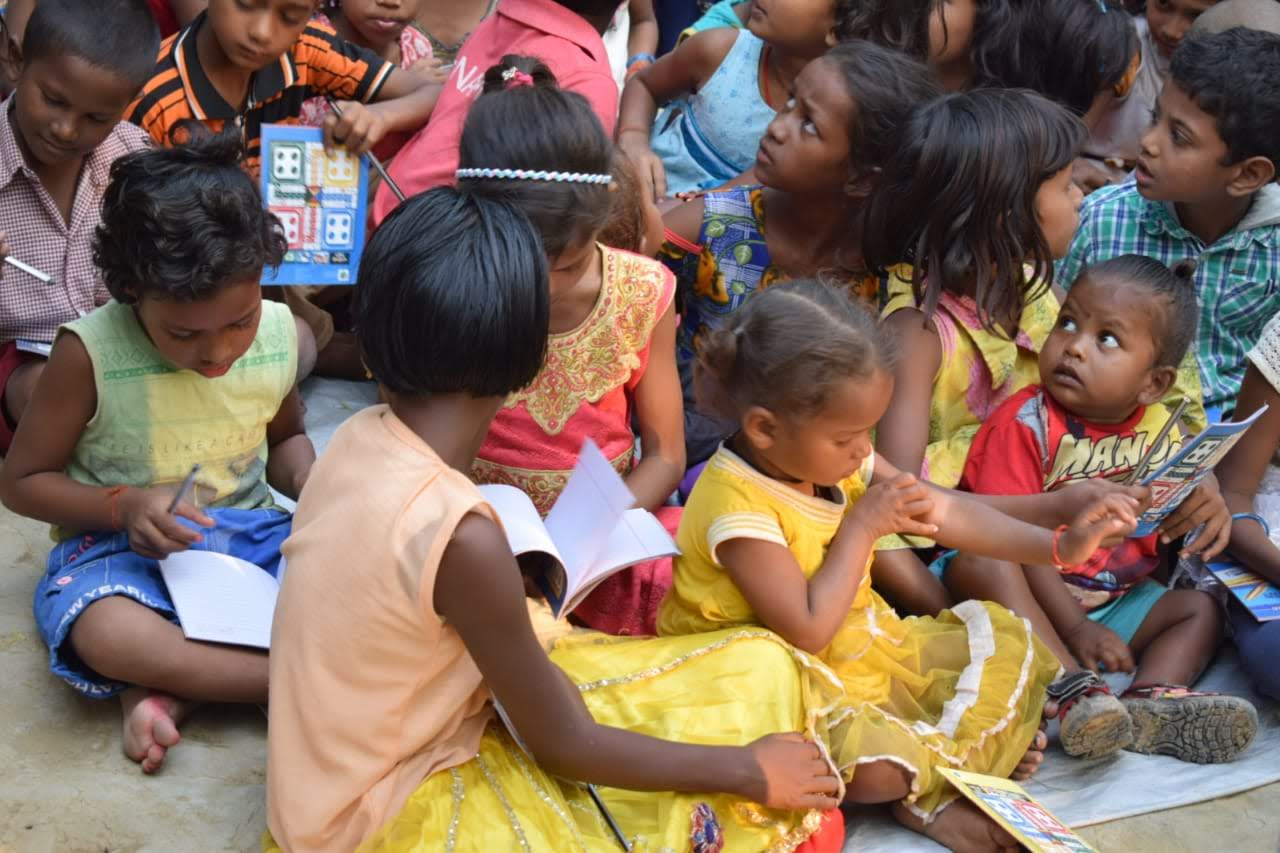
The Government Of India Has Been Actively Involved In Combating Child Labor And Improving The Welfare Of Children Through Several Initiatives And Policies. These Initiatives Can Complement The "Mission Hope For Tomorrow" Initiative By Addressing Child Labor, Ensuring Education, And Promoting The Well-Being Of Children. Below Are Some Of The Key Government Initiatives That Align With The Mission:
- National Child Labour Project (Nclp)
- The Nclp Aims To Withdraw Children From Labor And Mainstream Them Into Formal Education. The Initiative Provides Rehabilitation Facilities, Education, And Skill Development To Children Rescued From Labor.
- Relevance To Mission Hope For Tomorrow: This Program Directly Aligns With The Mission By Focusing On Rescuing Children From Labor And Providing Them With Education And Skills For A Better Future.
- Right To Education (Rte) Act, 2009
- The Rte Act Guarantees Free And Compulsory Education For Children Aged 6 To 14 Years. It Mandates That All Children In This Age Group Must Attend School And Receive An Education.
- Relevance To Mission Hope For Tomorrow: Ensuring That All Children Attend School Is Crucial To Breaking The Cycle Of Child Labor. The Rte Act Supports The Initiative’s Aim To Provide Children With The Opportunity To Dream, Not Work.
- Child Protection Services (Cps) Scheme
- The Cps Scheme Provides Institutional And Non-Institutional Care, Protection, And Rehabilitation For Children In Need Of Care And Protection, Including Those Involved In Child Labor.
- Relevance To Mission Hope For Tomorrow: This Initiative Supports The Rehabilitation Of Children And Offers A Safe Environment, Which Is Essential For The Success Of The Mission.
- Beti Bachao Beti Padhao (Bbbp) Scheme
- Launched To Promote The Welfare Of Girls, This Initiative Aims To Combat Gender-Based Discrimination, Promote Girls' Education, And Encourage The Participation Of Girls In All Aspects Of Society.
- Relevance To Mission Hope For Tomorrow: The Bbbp Scheme Can Help Reduce Child Labor By Advocating For The Education Of Girls, Who Are Often More Vulnerable To Labor Exploitation.
- Integrated Child Development Services (Icds)
- The Icds Provides Early Childhood Care And Education, Nutrition, Health Care, And Family Counseling Services To Children Under The Age Of 6 And Their Mothers.
- Relevance To Mission Hope For Tomorrow: The Icds Directly Supports Children’s Development In Their Formative Years, Helping Reduce The Likelihood Of Child Labor And Providing Better Educational Opportunities.
- Pradhan Mantri Jan Dhan Yojana (Pmjdy)
- This Scheme Aims To Provide Financial Inclusion By Offering Banking Services To Unbanked Individuals, Including Families At Risk Of Child Labor.
- Relevance To Mission Hope For Tomorrow: Financial Inclusion Can Help Families Improve Their Economic Situation, Reducing The Need To Send Children To Work.
- Swachh Bharat Abhiyan
- While Primarily Focused On Cleanliness And Sanitation, The Swachh Bharat Abhiyan Also Emphasizes Community Involvement And Empowerment, Including That Of Marginalized Groups, Which Often Include Families Involved In Child Labor.
- Relevance To Mission Hope For Tomorrow: The Mission Can Collaborate With This Initiative To Improve The Living Conditions Of Communities And Reduce Poverty, Thus Decreasing The Likelihood Of Child Labor.
- Skill Development Initiatives
- Programs Like Skill India, Pradhan Mantri Kaushal Vikas Yojana (Pmkvy), And Udaan Focus On Equipping Young People With Vocational Skills To Improve Their Employability.
- Relevance To Mission Hope For Tomorrow: These Initiatives Can Help The Youth Avoid Exploitative Work Conditions, Creating Pathways For Dignified Employment And Reducing The Number Of Children Who Feel The Need To Work.
- National Policy For Children, 2013
- This Policy Is Designed To Safeguard The Rights Of Children And Provide A Framework For The Welfare Of Children, Including Those Involved In Child Labor.
- Relevance To Mission Hope For Tomorrow: The Policy Creates An Enabling Environment For Child Protection And Rights, Which Aligns With The Mission’s Goal Of Protecting Children From Labor And Ensuring Their Right To Education.
- Protection Of Children From Sexual Offences (Pocso) Act, 2012
- This Law Aims To Protect Children From Sexual Abuse, Exploitation, And Trafficking, Areas Where Child Labor Is Often Prevalent.
- Relevance To Mission Hope For Tomorrow: By Addressing Child Abuse And Exploitation, The Pocso Act Works In Tandem With The Mission’s Goals Of Providing Safe Spaces For Children To Thrive Without The Risk Of Exploitation.
- National Commission For Protection Of Child Rights (Ncpcr)
- The Ncpcr Monitors The Implementation Of Child Rights Policies And Addresses Issues Like Child Labor, Child Trafficking, And Child Abuse.
- Relevance To Mission Hope For Tomorrow: The Ncpcr’s Role In Ensuring The Rights Of Children Complements The Mission’s Objective Of Safeguarding Children From Labor And Ensuring Their Access To Education.
- Sponsorship And Scholarship Schemes For Children
- The Government Provides Financial Assistance In The Form Of Sponsorships And Scholarships To Children From Economically Disadvantaged Backgrounds To Help Them Pursue Education Without The Need To Work.
- Relevance To Mission Hope For Tomorrow: These Schemes Can Help The Mission’s Efforts By Providing Financial Support For Children At Risk Of Being Involved In Child Labor, Making Education More Accessible.
- Labour Laws Enforcement
- The Child And Adolescent Labour (Prohibition And Regulation) Act, 1986 And The Factories Act, 1948 Prohibit Child Labor In Certain Industries And Regulate Working Conditions For Children.
- Relevance To Mission Hope For Tomorrow: Stronger Enforcement Of Labor Laws Will Aid In The Elimination Of Child Labor And Support The Mission's Goals.
- National Anti-Child Labour Project (Naclp)
- This Project Specifically Targets Regions Where Child Labor Is Widespread And Implements Strategies To Remove Children From Work And Place Them In Schools.
- Relevance To Mission Hope For Tomorrow: Naclp’s Activities Directly Contribute To The Mission By Offering Targeted Interventions To Eradicate Child Labor And Ensure That Children Have The Opportunity To Attend School.
- Aadhaar And Digital Initiatives
- Programs Like Aadhaar And Digital Platforms Help Track Children And Their Families To Ensure That Government Schemes And Benefits Reach The Right Individuals.
- Relevance To Mission Hope For Tomorrow: By Utilizing These Digital Tools, The Mission Can Ensure That Children In Need Of Assistance Are Identified And Provided With Educational Opportunities.
- National Rural Employment Guarantee Act (Mgnrega)
- This Act Provides Guaranteed Employment To Rural Households, Ensuring A Source Of Income For Families, Which Reduces The Likelihood Of Children Having To Work.
- Relevance To Mission Hope For Tomorrow: Providing Economic Stability To Families Can Reduce The Economic Necessity Of Child Labor.
- Mission Shakti (Women Empowerment)
- This Initiative Focuses On The Empowerment Of Women, Which Includes Educating Mothers And Encouraging Them To Prioritize Education For Their Children Instead Of Labor.
- Relevance To Mission Hope For Tomorrow: Empowering Women Can Help Reduce Child Labor, As Educated And Economically Stable Mothers Are More Likely To Prioritize Their Children's Education.
- Sampoorna Gramin Rozgar Yojana (Sgry)
- Focused On Providing Employment To Rural Families, This Initiative Can Help Ensure That Children Do Not Have To Work In Order To Support Their Households.
- Relevance To Mission Hope For Tomorrow: This Scheme Provides Families With Alternative Sources Of Income, Reducing The Economic Necessity Of Child Labor.
- Jeevan Kaushal Program
- This Program Imparts Life Skills To Children, Including Those From Marginalized Communities, Helping Them Navigate The Challenges Of Life While Ensuring They Do Not Resort To Labor.
- Relevance To Mission Hope For Tomorrow: This Can Aid The Mission In Empowering Children With Skills For A Better Future, Preventing Child Labor And Exploitation.
- Social Welfare Schemes
- Various Social Welfare Schemes, Including The National Family Benefit Scheme (Nfbs) And Rashtriya Swasthya Bima Yojana (Rsby), Provide Financial Assistance To Impoverished Families, Thereby Reducing The Financial Burden That Often Leads To Child Labor.
- Relevance To Mission Hope For Tomorrow: These Schemes Help Families Become Economically Self-Sufficient, Ensuring That Children Have The Opportunity To Attend School Instead Of Being Forced To Work.
Impact Projection Of Mission Hope For Tomorrow Initiative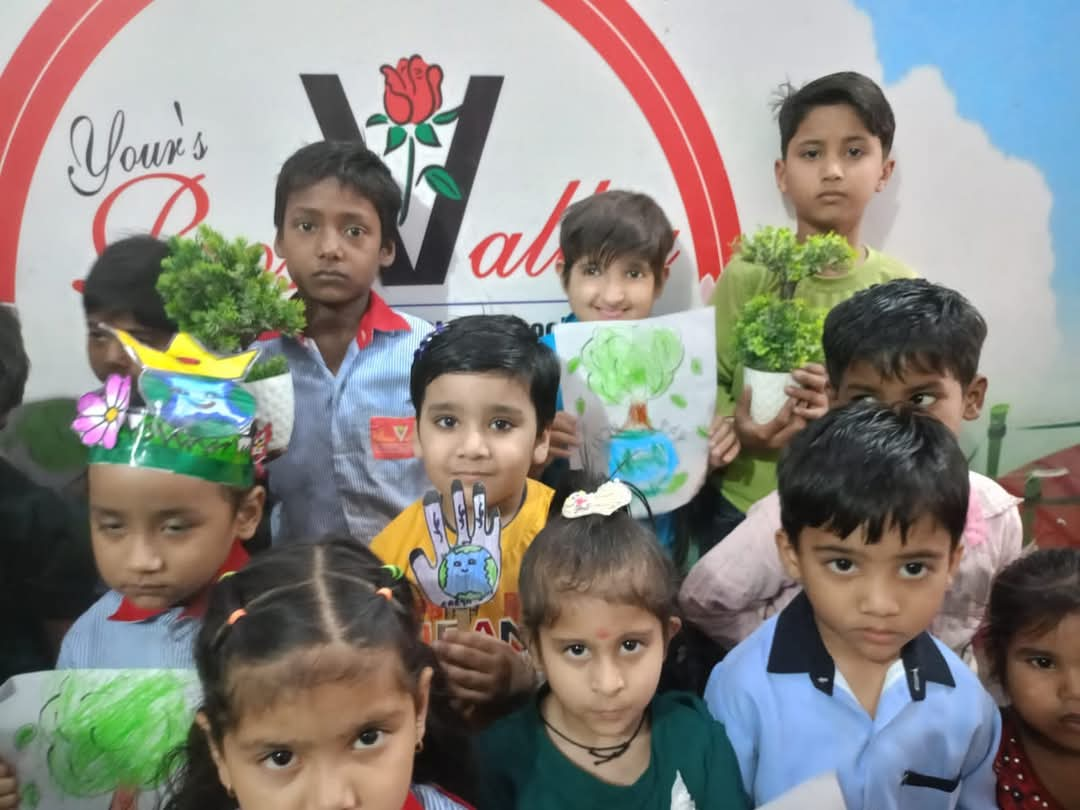
The "Mission Hope For Tomorrow" Initiative By Aadarsh Yuva Mission Human Welfare India Is Poised To Create A Transformative Impact On Combating Child Labor And Uplifting Vulnerable Children Across The Nation. Its Comprehensive Approach, Addressing Education, Skill Development, Social Protection, And Advocacy, Aims To Significantly Improve The Lives Of Children And Their Families, Thereby Building A Foundation For A Brighter Future.
Firstly, The Initiative Envisions A Drastic Reduction In The Prevalence Of Child Labor By Empowering Families With Alternative Livelihood Options And Ensuring Access To Quality Education For Their Children. By Targeting The Root Causes, Such As Poverty And Lack Of Awareness, The Mission Aspires To Create Sustainable Solutions That Break The Cycle Of Exploitation And Enable Children To Dream Beyond Their Immediate Hardships.
Secondly, The Initiative Aims To Empower Children Through Education And Skill Development, Equipping Them With The Tools They Need To Pursue Meaningful Careers. By Fostering Creativity, Critical Thinking, And Self-Confidence, The Mission Ensures That Children Not Only Escape The Clutches Of Labor But Also Contribute Productively To Society. The Long-Term Effect Will Be The Creation Of A Skilled And Educated Workforce, Bolstering The Nation’s Economic Growth.
Additionally, The Initiative’s Advocacy Efforts To Create Awareness And Strengthen Policy Implementation Will Encourage Widespread Societal Support. It Will Amplify The Voices Of Affected Children, Engage Communities, And Pressurize Industries To Adopt Ethical Practices. This Collective Action Will Help Ensure That The Rights Of Every Child Are Upheld And Safeguarded.
Lastly, The Initiative Will Have A Ripple Effect On Families And Communities, Enhancing Their Socio-Economic Well-Being. With Access To Education, Healthcare, And Social Protection, Families Can Rise Above Poverty, Leading To A More Equitable Society. Communities, In Turn, Will Witness Reduced Inequality, Improved Literacy Rates, And Enhanced Collective Progress.
"Mission Hope For Tomorrow" Is Not Merely An Initiative—It Is A Beacon Of Hope For Countless Children And Their Families. Its Impact Will Resonate Far Beyond Immediate Beneficiaries, Contributing To The Achievement Of Sustainable Development Goals (Sdgs) And Shaping A Future Where Every Child Can Dream, Grow, And Thrive.
Impact Metrics For Mission Hope For Tomorrow Initiative
To Measure The Effectiveness And Success Of The "Mission Hope For Tomorrow" Initiative, It's Essential To Establish Clear Impact Metrics That Capture Both Short-Term And Long-Term Changes In The Lives Of Children And Their Families. These Metrics Will Enable The Initiative To Monitor Progress, Identify Areas Of Improvement, And Ensure That It Is Meeting Its Goals.
- Reduction In Child Labor Incidents
- Metric: Percentage Reduction In The Number Of Children Engaged In Child Labor In Targeted Communities.
- How To Measure: Annual Surveys And Data Collection From Local Authorities, Community Leaders, And Schools To Track The Number Of Children Removed From Labor And Integrated Into Formal Education.
- Increase In School Enrollment Rates
- Metric: Percentage Increase In The Enrollment Of Children From Target Communities In Formal Education Institutions.
- How To Measure: Enrollment Data From Schools And Education Departments, Specifically Tracking The Number Of Children Previously Working Who Are Now Attending School.
- Retention Rates In Education
- Metric: Retention Rate Of Children In School After Being Enrolled By The Initiative.
- How To Measure: School Attendance Records, Monitoring Dropout Rates, And Regular Follow-Ups With Students And Families To Ensure They Continue Their Education.
- Improvement In Academic Performance
- Metric: Improvement In Academic Performance And Skills Development Among Children Who Were Previously Engaged In Labor.
- How To Measure: Assessments And Exams At Local Schools, As Well As Skill Development Workshops, To Evaluate Children's Progress In Literacy, Numeracy, And Vocational Skills.
- Family Income Improvement
- Metric: Percentage Increase In Family Income For Households Of Children Involved In The Initiative.
- How To Measure: Household Income Surveys, Particularly Focusing On Whether Families Are Accessing Alternative Income-Generating Opportunities (E.G., Through Skill Training Or Social Protection Programs).
- Community Engagement And Awareness
- Metric: Level Of Community Awareness About The Harms Of Child Labor And The Benefits Of Education.
- How To Measure: Community Surveys, Focus Group Discussions, And Attendance At Awareness Campaigns And Workshops Conducted By The Initiative.
- Employment Opportunities For Adults
- Metric: Number Of Adults (Especially Parents) Who Receive Employment Or Income-Generating Opportunities Through The Initiative’s Livelihood Programs.
- How To Measure: Tracking The Number Of Parents Or Guardians Who Have Accessed Vocational Training, Microloans, Or Employment Through Partnerships With Local Businesses Or Government Programs.
- Health And Well-Being Of Children
- Metric: Improvement In The Physical And Mental Health Of Children Who Were Previously Engaged In Child Labor.
- How To Measure: Health Check-Ups And Surveys Before And After Enrollment In The Program, Tracking Access To Healthcare Services, Nutrition, And Psychological Support.
- Policy Advocacy Success
- Metric: Number Of Policy Changes Or Government Initiatives Influenced By The Mission’s Advocacy Efforts.
- How To Measure: Monitoring Changes In Local, Regional, And National Policies Regarding Child Labor, Education Access, And Children’s Rights, Including Any New Laws Or Regulations Passed In Favor Of Child Protection.
- Partnerships And Collaborations
- Metric: Number Of Successful Partnerships With Other Ngos, Government Bodies, And Businesses.
- How To Measure: Tracking The Number Of Collaborations Established, Particularly Those Focused On Funding, Resource Sharing, And Joint Initiatives Aimed At Child Labor Reduction.
- Awareness And Knowledge Dissemination
- Metric: Number Of Awareness Campaigns Conducted And The Reach Of Those Campaigns (E.G., Media Coverage, Social Media Engagement).
- How To Measure: Social Media Metrics (Likes, Shares, Comments, Video Views), Media Coverage, And The Number Of People Reached Through Physical Campaigns And Community Events.
- Impact On Gender Equality
- Metric: Percentage Increase In The Enrollment And Retention Of Girls In Education Programs.
- How To Measure: Gender-Specific Enrollment And Retention Statistics, With A Focus On Ensuring That Girls, Who Are Often Disproportionately Affected By Child Labor, Benefit Equally From The Initiative.
- Increase In Public Support For The Cause
- Metric: Public Donations, Volunteer Participation, And Overall Engagement With The Mission’s Activities.
- How To Measure: Tracking The Number Of Volunteers, Donations, And Fundraising Events Organized For The Initiative, As Well As Public Participation In Events And Campaigns.
- Community Support For Alternative Livelihoods
- Metric: Percentage Of Communities Adopting Alternative Livelihoods And Education-Focused Models.
- How To Measure: Community-Based Surveys And Focus Groups Assessing Whether Communities Have Shifted Away From Reliance On Child Labor And Have Adopted Sustainable Income-Generating Strategies.
- Monitoring And Reporting Compliance
- Metric: Frequency And Quality Of Monitoring Reports Submitted By Local Partners And Stakeholders.
- How To Measure: Regular Reports Submitted By Community Partners, Along With The Frequency Of Monitoring Visits And Program Evaluations To Ensure Transparency And Accountability.
- Number Of Children Rehabilitated
- Metric: Total Number Of Children Rescued From Labor And Rehabilitated Into Education Or Vocational Training.
- How To Measure: Case Management Records That Track Each Child’s Journey From Labor To Education, Skill Development, Or Family Reintegration.
- Long-Term Impact On Child Labor Trends
- Metric: Long-Term Reduction In The Overall Child Labor Statistics In Regions Targeted By The Initiative.
- How To Measure: Annual Government Or Third-Party Surveys On Child Labor Rates, Comparing Data Before And After The Intervention Of The Initiative.
- Sustainability Of The Initiative
- Metric: Ability To Sustain The Initiative’s Activities Beyond Initial Funding And Support.
- How To Measure: Tracking The Initiative’s Ability To Attract Continued Funding, Maintain Partnerships, And Ensure Ongoing Support For Affected Children.
- Reduction In Child Exploitation And Abuse
- Metric: Number Of Cases Of Child Exploitation Or Abuse Reported In The Targeted Areas After The Initiative’s Intervention.
- How To Measure: Collaboration With Local Law Enforcement, Child Protection Services, And Ngos To Track Reports Of Child Abuse Or Exploitation In The Communities.
- Engagement With Local And National Media
- Metric: Media Coverage And Public Discussions About The Success And Progress Of The Initiative.
- How To Measure: Number Of Media Outlets (Both Traditional And Digital) That Cover The Mission, As Well As Interviews, Articles, And News Stories Related To Child Labor And The Mission’s Impact.
By Utilizing These Impact Metrics, "Mission Hope For Tomorrow" Can Continuously Monitor Its Effectiveness, Improve Its Strategies, And Ensure That It Achieves Its Goal Of A Future Where Every Child Can Dream, Grow, And Thrive In An Environment Free From Labor Exploitation.
Future Goals Of "Mission Hope For Tomorrow" Initiative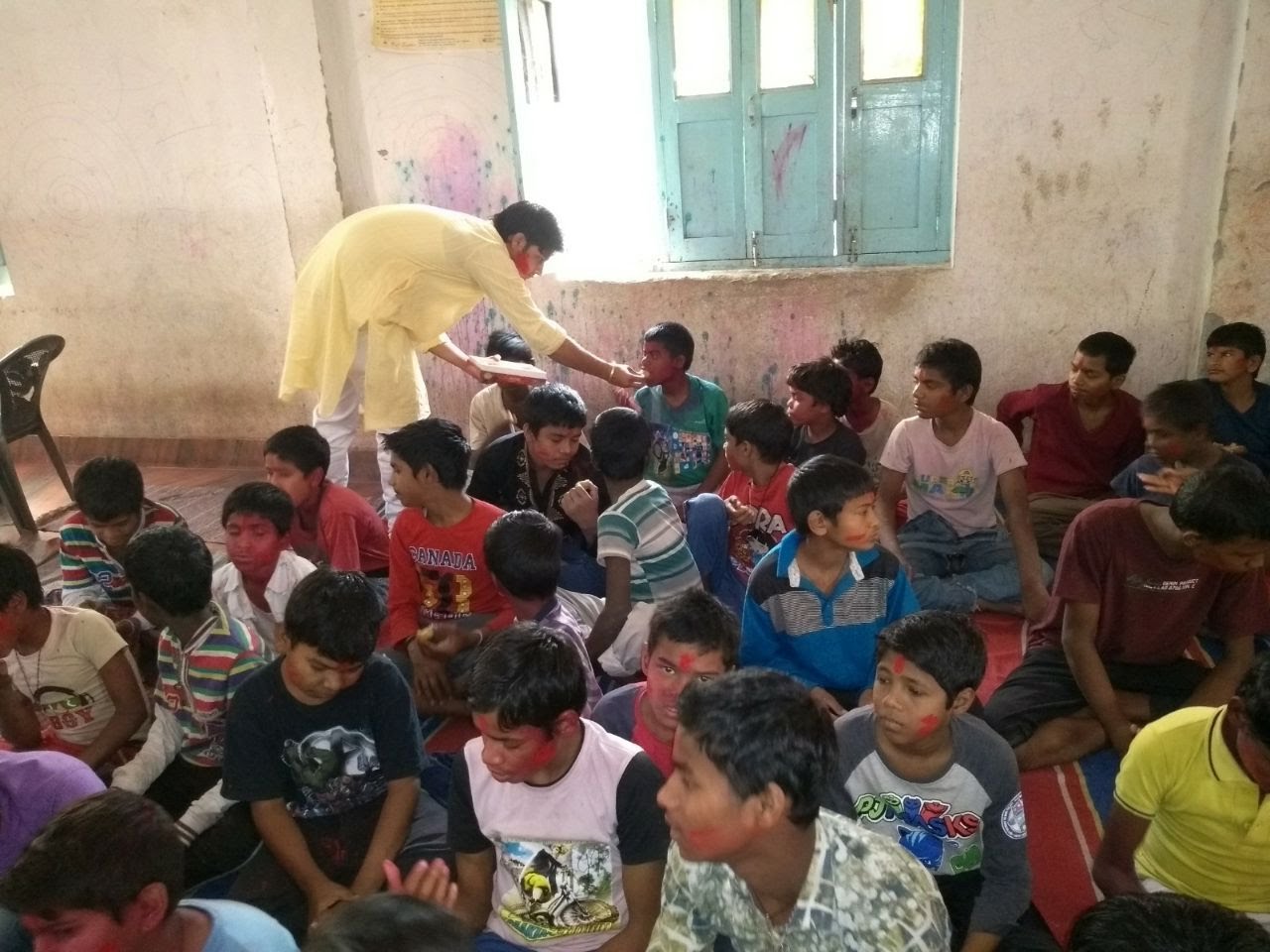
- Complete Eradication Of Child Labor: Eliminate Child Labor In Targeted Regions, Ensuring That All Children Are Enrolled In School And Not Forced Into Exploitative Work.
- Universal Access To Education: Ensure Every Child In Vulnerable Communities Has Access To Free, Quality Education From Primary Through Secondary Levels.
- Strengthen Child Protection Laws: Advocate For Stronger Enforcement Of Child Labor Laws And The Implementation Of Stricter Penalties For Violators.
- Skill Development And Vocational Training: Provide Skill Development Programs And Vocational Training To Children And Youth At Risk Of Labor, Preparing Them For Dignified, Sustainable Employment.
- Awareness Campaigns On Child Rights: Launch Nationwide Campaigns To Raise Awareness About Child Labor, Its Harmful Impacts, And The Importance Of Education.
- Community Mobilization And Empowerment: Mobilize Local Communities To Take Active Roles In Protecting Children From Labor, Promoting Education, And Ensuring Child Rights.
- Strengthen School Infrastructure: Work With Local Governments And Ngos To Improve School Infrastructure, Providing Adequate Facilities And Resources For Students.
- Increase School Enrollment Rates: Increase The Enrollment Rates Of Children, Especially Girls, In Schools Through Targeted Outreach Programs And Incentives.
- Promote Gender Equality In Education: Ensure That Girls, Who Are Often More Vulnerable To Child Labor, Have Equal Access To Education And Skill Development Opportunities.
- Collaborate With Local Governments: Strengthen Partnerships With Local Governments To Ensure The Efficient Implementation Of Child Welfare And Education Policies.
- Create Economic Alternatives For Families: Introduce Livelihood Programs And Micro-Financing Schemes For Parents To Reduce The Economic Pressure That Leads To Child Labor.
- Rescue And Rehabilitation Of Child Laborers: Establish Safe Shelters And Rehabilitation Programs For Children Rescued From Labor, Offering Counseling, Education, And Health Services.
- Support For Transitioning Children: Provide Support To Children Transitioning From Child Labor To School, Including Mentorship Programs And Tutoring Services.
- Promote Corporate Social Responsibility (Csr): Collaborate With Businesses And Industries To Promote Ethical Labor Practices And Discourage Child Labor In Supply Chains.
- Capacity Building For Teachers And Educators: Train Teachers To Handle Children From Disadvantaged Backgrounds And Those Transitioning From Child Labor, Ensuring A Supportive Learning Environment.
- Psychosocial Support Programs: Implement Counseling And Mental Health Support Services For Children Affected By Trauma From Child Labor Or Abuse.
- Monitoring And Evaluation Systems: Establish Robust Monitoring And Evaluation Mechanisms To Track The Progress Of The Initiative, Assess Impact, And Ensure Accountability.
- Advocacy For Policy Change: Advocate For National And State-Level Policies That Support Child Education, Protection, And The Elimination Of Child Labor.
- Foster Partnerships With Ngos And Civil Society: Strengthen Partnerships With Other Ngos, International Organizations, And Civil Society Groups To Share Resources, Expertise, And Best Practices.
- Global Awareness Campaigns: Launch Global Campaigns To Raise Awareness About Child Labor, Encouraging International Cooperation And Funding For Anti-Child Labor Programs.
- Support For Children With Disabilities: Ensure That Children With Disabilities Have Equal Access To Education And Protection Services, Creating Inclusive Educational Programs.
- Establish Child Welfare Centers: Set Up Child Welfare Centers In High-Risk Areas That Provide Legal Aid, Medical Care, Education, And Emotional Support To Children At Risk.
- Sustainable Financial Model: Develop A Sustainable Funding Model For The Initiative, Including Donor Support, Partnerships With Corporates, And Government Funding.
- Engage Youth As Advocates: Empower Youth Leaders To Become Advocates For Children's Rights And Mentors For Younger Generations, Spreading The Message Of Hope And Change.
- Long-Term Impact And Legacy: Create A Long-Term Impact By Building A Self-Sustaining System That Continues To Protect Children From Labor And Ensures They Have The Opportunity To Dream And Achieve Their Goals.
These Goals Reflect The Broader Vision Of Mission Hope For Tomorrow: To Create A World Where Children Are Free From Exploitation, Educated, And Empowered To Reach Their Full Potential. Through Comprehensive And Sustained Efforts, The Initiative Aims To Significantly Contribute To The Global Fight Against Child Labor And Support The Overall Well-Being Of Children Across India And Beyond.
Case Studies And Success Stories Of "Mission Hope For Tomorrow" Initiative
- Rescuing Child Laborers In Rural Maharashtra
Background: In A Remote Village In Maharashtra, Many Children Were Engaged In Labor At Brick Kilns And Farms. Despite Their Young Age, These Children Worked Long Hours To Support Their Families.
Success Story: With The Help Of Local Government Bodies And Community Outreach Programs, Mission Hope For Tomorrow Rescued 50 Children From The Brick Kilns. These Children Were Provided With Education, Nutritional Support, And Counseling.
Outcome: All 50 Children Are Now Enrolled In Schools, And Several Have Excelled Academically. Their Families, With The Help Of Economic Assistance Programs, No Longer Rely On Their Children's Income. The Village Has Become A Model For Child Labor-Free Communities In The Region.
- Empowering Street-Connected Children In Delhi
Background: Delhi Has A Large Population Of Street-Connected Children Who Are Vulnerable To Child Labor, Abuse, And Trafficking.
Success Story: In Partnership With Local Ngos, Mission Hope For Tomorrow Initiated A Program To Rehabilitate Street Children. The Program Provided Shelter, Basic Education, Vocational Training, And Emotional Support.
Outcome: Over 200 Children Were Rescued, Rehabilitated, And Placed In Schools. A Significant Number Of These Children Have Gone On To Pursue Higher Education And Secure Stable Jobs, Breaking Free From The Cycle Of Poverty And Exploitation.
- Promoting Girl Child Education In Rajasthan
Background: In Rural Rajasthan, Traditional Norms Often Lead To Girls Being Kept At Home To Help With Household Chores Or Forced Into Early Marriages, Leaving Little Opportunity For Education.
Success Story: Through Targeted Campaigns And Awareness Drives, Mission Hope For Tomorrow Engaged With Community Leaders And Parents, Emphasizing The Importance Of Educating Girls. Scholarships And Free Uniforms Were Provided To Incentivize School Enrollment.
Outcome: The Initiative Successfully Enrolled 150 Girls In School. Many Of These Girls Are Now Actively Participating In Their Communities And Aspiring For Careers In Teaching, Healthcare, And Engineering.
- Vocational Training For Children In Tamil Nadu
Background: In A Fishing Village In Tamil Nadu, Children Were Often Sent To Work At A Very Young Age To Support Their Families.
Success Story: Mission Hope For Tomorrow Introduced Vocational Training Programs That Taught Children Skills Such As Carpentry, Tailoring, And Computer Literacy. This Initiative Provided A Viable Alternative To Child Labor, Offering A Pathway To Economic Independence.
Outcome: More Than 100 Children Participated In The Program, And Several Of Them Have Since Started Their Own Small Businesses Or Secured Jobs In The Local Community. The Project Has Also Helped Raise Awareness About Child Labor In The Village.
- Eradicating Child Labor In The Textile Industry Of Ahmedabad
Background: Many Children In Ahmedabad's Textile Industry Were Subjected To Long Working Hours In Hazardous Conditions, Often Suffering From Health Issues Due To Exposure To Chemicals And Dyes.
Success Story: Mission Hope For Tomorrow, In Collaboration With Local Authorities, Worked With Textile Factories To Replace Child Labor With Adult Workers. The Initiative Also Provided Schooling And Health Checkups For The Children.
Outcome: More Than 80 Children Were Removed From Hazardous Working Conditions And Enrolled In Formal Education. The Factories Also Implemented Better Labor Practices, Ensuring Compliance With Labor Laws.
- Supporting Child Survivors Of Trafficking In Uttar Pradesh
Background: Uttar Pradesh Has Been A Hotspot For Child Trafficking, With Many Children Being Forced Into Labor In Unsafe Environments.
Success Story: Mission Hope For Tomorrow Partnered With Law Enforcement Agencies To Rescue Children Who Had Been Trafficked And Provided Them With Psychological Support, Education, And Legal Assistance.
Outcome: The Initiative Successfully Rescued 40 Children, All Of Whom Were Provided With Shelter And Rehabilitation Services. Many Have Now Been Reunited With Their Families, And Some Are Actively Involved In Anti-Trafficking Advocacy.
- Child Labor-Free Farming Communities In Kerala
Background: In Kerala, Child Labor In The Agricultural Sector, Particularly In Rubber Plantations, Was Rampant, With Children Often Missing Out On Education.
Success Story: Mission Hope For Tomorrow Worked With Plantation Owners And Local Governments To Replace Child Labor With Adult Workers. Simultaneously, The Initiative Provided Free Education And Healthcare To Children In The Affected Areas.
Outcome: By Collaborating With The Plantation Industry, The Initiative Successfully Eradicated Child Labor In The Area. Over 100 Children Have Now Graduated From School, With Many Pursuing Careers In Agriculture And Environmental Sciences.
- Launching Child Labor Awareness Programs In Andhra Pradesh
Background: In Several Districts Of Andhra Pradesh, Many Children Were Involved In Seasonal Labor, Particularly In The Cotton Fields.
Success Story: Mission Hope For Tomorrow Launched An Intensive Awareness Program Aimed At Educating Families And Children About The Detrimental Effects Of Child Labor. Through Village Meetings, Seminars, And School Partnerships, The Initiative Emphasized The Importance Of Education.
Outcome: Awareness Increased Significantly, Leading To The Withdrawal Of Children From Labor. Many Families In The Region Began To Prioritize Education Over Child Labor, And School Attendance Rates Improved By 40%.
- Rehabilitation Of Children In Kolkata's Glass Industry
Background: Kolkata’s Glass Industry Employed Children To Handle Hot Materials And Perform Dangerous Tasks, Risking Their Health And Safety.
Success Story: Mission Hope For Tomorrow Collaborated With Factory Owners And Local Authorities To Establish A Child Labor-Free Zone In The Glass Manufacturing Sector. A Rehabilitation Program Was Launched For The Children, Focusing On Education And Health Services.
Outcome: Over 60 Children Were Rescued, Provided With Proper Education, And Reintegrated Into The Community. The Initiative Also Led To Improved Working Conditions For Adults, Ensuring Fair Wages And Safety Standards.
- Reintegration Of Children From Child Labor In Bihar
Background: Many Children In Bihar Were Found Working In Small-Scale Industries, Particularly In The Pottery And Brick-Making Sectors.
Success Story: Mission Hope For Tomorrow Established A Reintegration Program That Provided Children With A Safe Place To Stay, Free Education, Vocational Training, And Emotional Support.
Outcome: The Initiative Successfully Reintegrated Over 100 Children Into Schools And Local Vocational Programs. Many Of These Children Are Now Pursuing Careers In Various Fields, Including Mechanics, Tailoring, And Teaching, Ensuring They Break The Cycle Of Poverty And Exploitation.
These Case Studies Reflect The Mission Hope For Tomorrow's Multi-Faceted Approach In Fighting Child Labor And Ensuring A Better Future For Vulnerable Children. Through Rescue Operations, Rehabilitation, Education, And Community Engagement, The Initiative Has Made A Tangible Difference In The Lives Of Countless Children Across India. These Success Stories Serve As A Powerful Reminder Of The Mission's Potential And Its Dedication To Creating A Child Labor-Free India.
Conclusion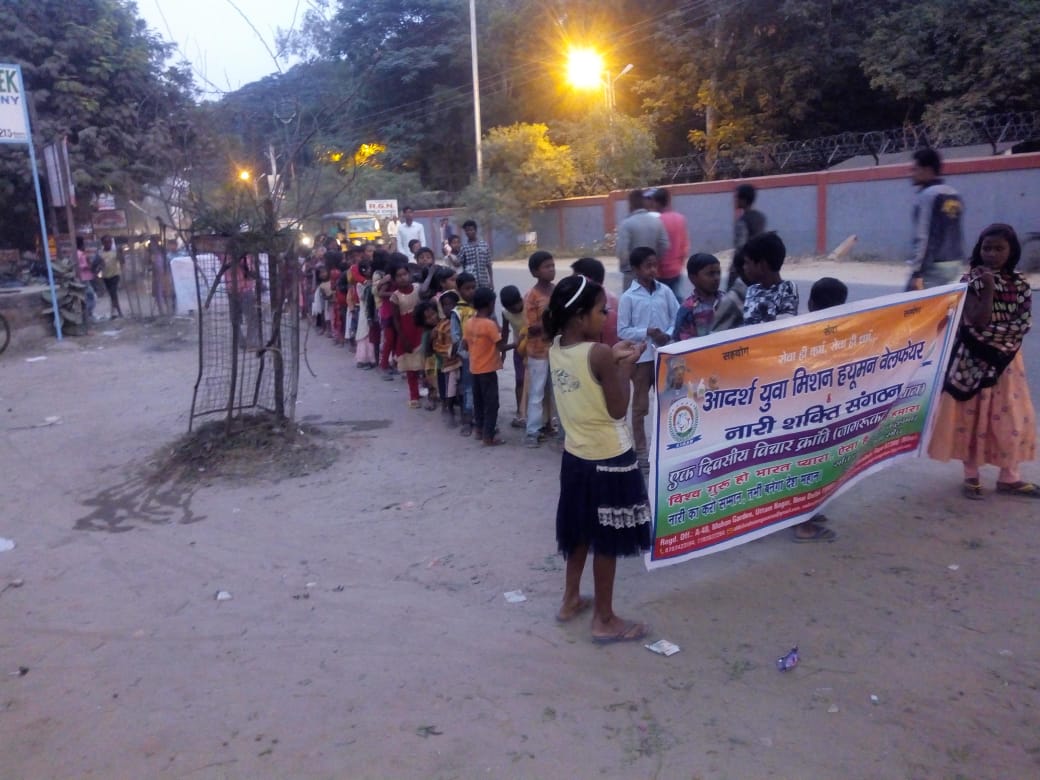
The "Mission Hope For Tomorrow" Initiative By Aadarsh Yuva Mission Human Welfare India Has Proven To Be A Transformative Force In The Fight Against Child Labor, Empowering Vulnerable Children And Offering Them The Opportunity To Dream, Grow, And Thrive. By Addressing The Root Causes Of Child Labor, Such As Poverty, Lack Of Education, And Limited Access To Resources, This Initiative Has Been Successful In Rescuing Children From Exploitative Work Conditions And Providing Them With The Tools They Need For A Brighter Future.
Through A Multifaceted Approach, The Initiative Has Focused On Rehabilitation, Education, Skill Development, And Advocacy. Children Who Were Once Confined To Labor Have Been Enrolled In Schools, Provided With Vocational Training, And Offered Safe Spaces For Emotional And Psychological Healing. By Engaging Communities And Raising Awareness About The Importance Of Child Rights And Education, Mission Hope For Tomorrow Has Mobilized Local Support, Which Has Been Crucial In Creating Lasting Change.
The Mission's Efforts Have Not Only Impacted The Lives Of Individual Children But Have Also Had A Ripple Effect On Entire Communities. Families Have Been Provided With Alternative Livelihood Options, Reducing The Economic Pressures That Often Drive Children Into Labor. Furthermore, The Collaboration With Local Governments, Ngos, And Other Stakeholders Has Helped Strengthen Child Protection Laws And Improve The Enforcement Of Existing Regulations.
As A Result, The Mission Hope For Tomorrow Initiative Has Made Significant Strides In Its Mission To Eradicate Child Labor And Empower Future Generations Of Children. The Initiative’s Success Stories—Of Children Rescued, Educated, And Empowered—Serve As Powerful Reminders Of The Difference That Can Be Made When Society Comes Together To Protect The Rights Of The Most Vulnerable. Looking Forward, Mission Hope For Tomorrow Remains Committed To Creating A Future Where All Children Are Free To Dream, Learn, And Grow, Contributing To A More Compassionate, Equitable, And Just Society.


